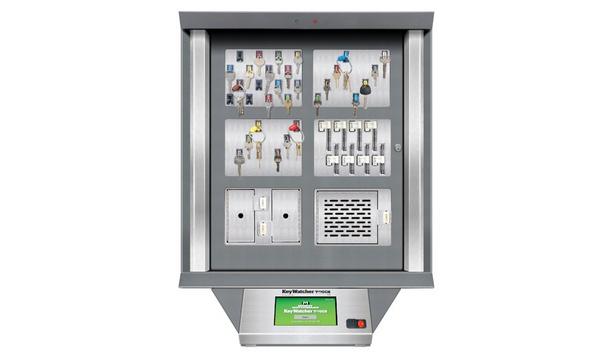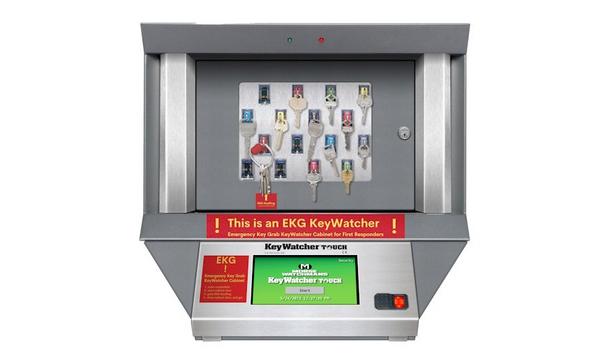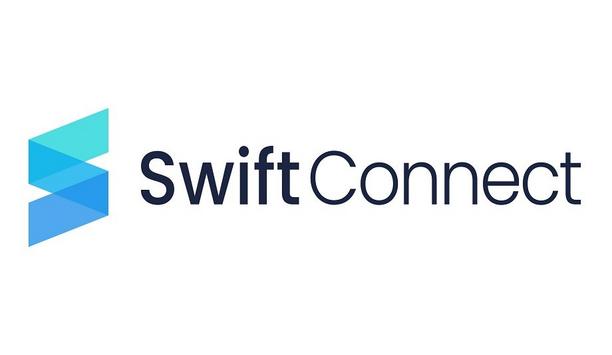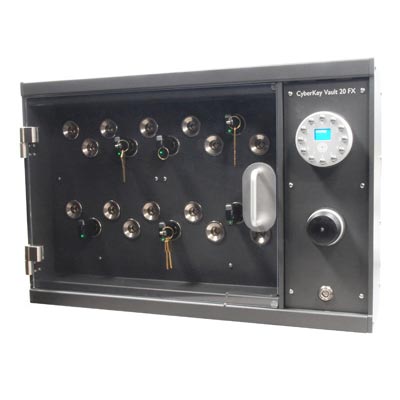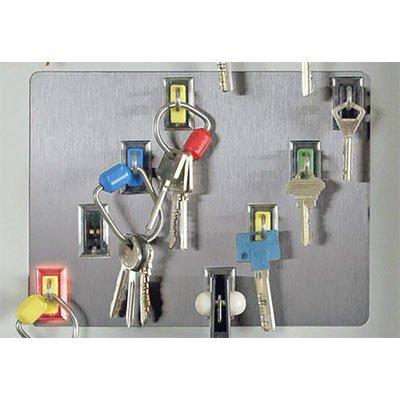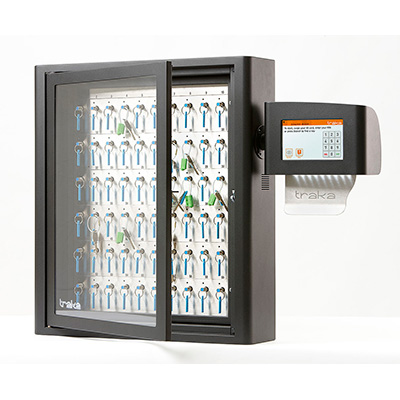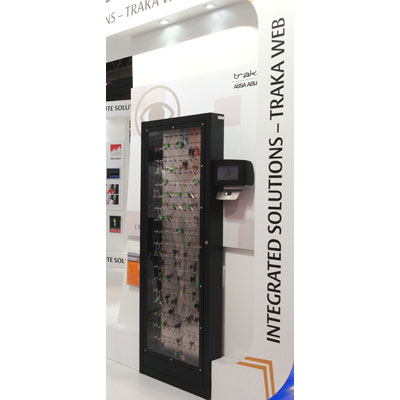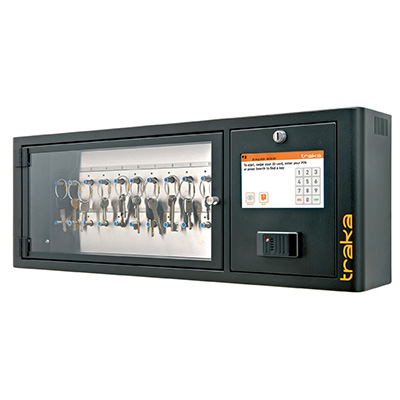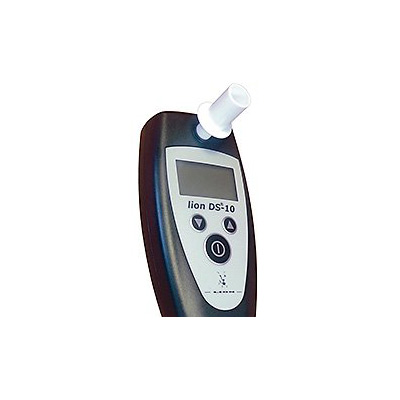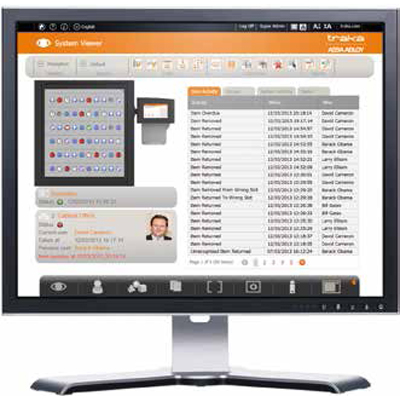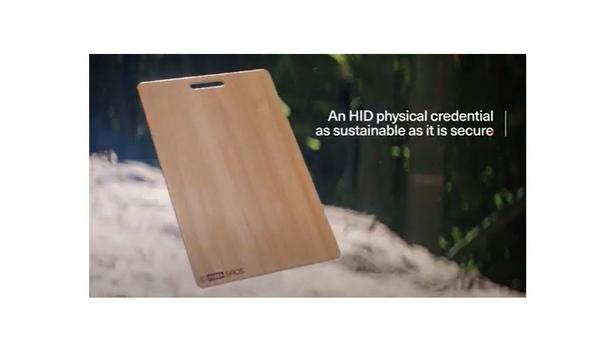Key management
Camden Door Controls has announced a number of enhancements to its popular CX-DE1200 Series EXIT WATCH™ delayed egress magnetic locks. These include a louder 75 dB voice annunciation, packaging the lock with a 90 dB remote sounder, and adding the option for a cost-effective kit that includes the maglock, remote sounder, and a remote reset key switch. Camden EXIT WATCH™ series Camden EXIT WATCH™ series delayed egress magnetic locks feature a 1200 lb. holding force, rugged al...
Powering digital access with energy-harvesting technology frees organisations from wiring and even batteries. However, to meet the challenges of the future, digital access needs more. It needs technologies and software platforms flexible enough to grow and adapt with the evolving needs of each organisation, protecting their investment in digital access while delivering an ROI every day. Digital access solutions Kinetic energy generated by inserting the intelligent key is harvested to power th...
Morse Watchmans, the industry pioneer in key control and asset management systems, is highlighting its advanced solutions at stand 5/E20 during The Security Event UK 2025. The company will demonstrate innovative key management systems tailored for applications in healthcare, education, transportation, critical infrastructure, and many other sectors. Key management system KeyWatcher® Touch, designed for secure, efficient, and easy-to-use key control Taking centre stage is their flagship K...
The Board of Directors of Trane Technologies plc, a global climate innovator, declared a quarterly dividend of $0.94 per ordinary share, or $3.76 per share annualised. The dividend is payable on June 30, 2025, to shareholders of record as of June 6, 2025. Trane Technologies has paid consecutive quarterly cash dividends on its common shares since 1919 and annual dividends since 1910.
Integrated Control Technology a pioneer manufacturer of intelligent access control and security solutions, announced the release of their new TSL access reader series. The new TSL range packs plenty of extras into a slimmed down version of the much-loved ICT readers. Style meets security TSL delivers a dynamic solution for property managers, security professionals, and building operatorsCombining sleek aesthetics with cutting-edge functionality, the TSL delivers a dynamic solution for p...
Morse Watchmans, the industry pioneer in key control and asset management systems, is highlighting its lineup of innovative key management solutions at booth 15109 at ISC West 2025. The company will feature its trusted Emergency Key Grab (EKG) Kit designed to enhance security and streamline crisis response across multiple sectors, including schools, hospitals, airports, public venues, government buildings, data centres, and other critical environments. Morse Watchmans growth strategy And...
News
Integrated Access Control and Security manufacturer TDSi announces the appointment of Robert Bullen as its Distribution Sales Manager South. With a proven track record of successful business development roles in the UK security industry, Robert is bringing his expertise and experience to support TDSi’s Distribution Partners and customers across the southern region of the UK and beyond. Developing strategic partnerships Commenting on Robert’s appointment, Alex Rumsey, Sales Director UK for TDSi stated, “We were highly impressed with Robert's extensive experience across the Security market.” “Having had roles ranging from managing key accounts to developing strategic partnerships, he has great insights and a firm understanding of what security partners need in an evolving market, making him the perfect choice to deliver all the necessary support for TDSi's partners and customers.” Reliable security solutions Reflecting on the reasons for choosing his new role, Robert also commented, “I love working with the UK Distributors - and the opportunity to do this within TDSi is incredibly exciting! TDSi's reputation for innovation, along with a flexible product range and its market presence aligns perfectly with my personal career goals.” He added, “TDSi's success lies in its commitment to delivering high quality, reliable security solutions that meet the ever-evolving needs of the market. Its focus on innovation, customer service, and building strong partnerships has set it apart from the competition. Additionally, TDSi's ability to adapt to market trends and provide tailored solutions has been key to its ongoing success.” Collaborative growth focus TDSi offers a compelling Partner Programme proposition that delivers competitive pricing Although based primarily in the Southern region, Robert's role will see him travelling across different regions to meet customers and partners and to assist with project planning. This hands-on approach will enable him to maintain close support links with TDSi's partners and customers, ensuring the company has close contact with the unique needs of all parties. TDSi offers a compelling Partner Programme proposition that delivers competitive pricing, robust technical support, and free high-calibre training. With a strong brand and collaborative growth focus, TDSi is ideal for distributors looking to expand and increase their market share. Exploring new collaborations Robert has a clear vision for developing his role and further enhancing TDSi’s relationships with its distribution partners. “We are looking to further increase TDSi's market presence by deepening relationships with existing distributors and exploring new collaborations. We will leverage data insights to target new partners, expand our product range, and invest in marketing and training initiatives. I’m excited to join TDSi as the industry rapidly evolves, aiming to drive growth through strong partnerships and innovation to drive sales. I am committed to upholding TDSi's values, supporting partners, and exceeding customer expectations.”
Schlage, a pioneer in home security solutions for over a century, introduces Advanced Rekey™, an innovative rekeying solution that offers builders and their professional partners efficient key management and a simple way for homeowners to maintain security as their homes evolve. Debuting at the 2025 International Builders' Show (IBS) in Las Vegas, Advanced Rekey is designed for ease of use, giving users greater control over home security with a seamless, do-it-yourself feature that makes rekeying fast, convenient and cost-effective. Innovative rekeying solution "Schlage's Advanced Rekey solution puts the power of quickly rekeying directly into builders', their partners' and homeowners' hands," said David Perozzi, General Manager, Allegion Home. "We are excited to add this feature across all of our residential keyed mechanical and electronic products, bringing our trade professional partners additional time savings, convenience and peace of mind, while ensuring that homeowners' security can evolve as their needs change." Traditional rekeying services Advanced Rekey empowers builders and homeowners with enhanced convenience and security Backed by Schlage's limited lifetime mechanical warranty, Advanced Rekey empowers builders and homeowners with enhanced convenience and security they can control. With just one simple tool and the current working key, users can quickly and effortlessly rekey their locks without removing them from the door – eliminating the hassle and expense of traditional rekeying services and offering a new level of control over home security. Key management systems Key benefits of Schlage's Advanced Rekey Solution: Increased Efficiency: Advanced Rekey provides time savings to builders and their partners by reducing time spent on key management systems and delivering an easy handoff process from the builder to homeowner. Quick and Effortless: Advanced Rekey is designed to be user-friendly for anyone, regardless of their experience with locks. Users can easily rekey their locks in just a few simple steps, no professional skills required. This solution is ideal for lost or stolen keys, changes in homeownership or updating the whole home to be keyed alike. Enhanced Security: Maintain control of who has access to the home. Rekeying with Advanced Rekey adds an extra layer of safety with bump resistant security features. After completing the rekey process, the old key will no longer work, providing an immediate security upgrade and eliminating concerns of unauthorised access. Versatile Solution: Builders can exchange a conventional SC1 keyway cylinder on existing Schlage door locks to an Advanced Rekey cylinder. With 100,000 possible keying combinations, Advanced Rekey helps reduce the likelihood that the same keying combination is duplicated. Schlage's Advanced Rekey solution will be available to builders through their dealers and wholesale partners in late 2025. To experience Advanced Rekey firsthand, visit Booth #C2125 at the 2025 International Builders' Show in Las Vegas. Schlage is an Allegion brand.
SecurityBridge, the Cybersecurity Command Centre for SAP, announced the launch of SecurityBridge Security Information Event Management (SIEM) and IT Service Management (ITSM) for SAP. These innovative company platform additions are designed to enhance SAP-specific security monitoring and incident management. Broader IT security operations Through the enhancements, APIs allow workflow integration between infrastructure security and SAP security to enable the sharing of identified IoCs (Indicators of Compromise) and initiate automated compensating controls to bridge the gap with unprecedented visibility. “With the increasing recognition of SAP vulnerabilities, organisations need robust solutions to ensure this information seamlessly aligns with broader IT security operations,” said Holger Hügel, Product Management Director at SecurityBridge.“SecurityBridge SIEM for SAP and ITSM for SAP provides organisations with enriched threat insights and improved operational efficiency.” SAP audit and security logs The solution enriches event messages by correlating SAP audit and security logs with contextual data SecurityBridge integrates seamlessly with enterprise SIEM and ITSM solutions, offering built-in SAP security monitoring rules customised to fit organisational needs—allowing for rapid deployment and tailored security responses. Additionally, the solution enriches event messages by correlating SAP audit and security logs with contextual data, including infrastructure details such as hostnames and IP addresses—empowering Security Operations Centres (SOCs) to respond swiftly and effectively. Additional benefits Built-in SAP Security Monitoring Rules: Pre-configured and customisable rules for rapid deployment and effective monitoring. Incident Message Enrichment: Delivers actionable insights by correlating SAP events with broader infrastructure details. Enhanced Operational Efficiency: This solution provides a unified view of SAP-specific and enterprise-wide security operations, reducing response times and increasing threat visibility. Simplified Incident Management for SAP: Drag-and-drop features and seamless ITSM workflows with tools like ServiceNow and Jira, including backlinks to original SAP events for detailed analysis. Support for change management processes SecurityBridge addresses this need by embedding essential security checks into SAP’s standard testing The complexity of SAP applications makes Change Management a critical process that requires seamless integration with technical testing and validation. SecurityBridge addresses this need by embedding essential security checks into SAP’s standard testing and deployment workflows, including the ABAP Test Cockpit (ATC) and SAP Solution Manager. Its Patch Management feature automates SAP patching within SAP Solution Manager. At the same time, SecurityBridge TRACE (Transport Center) offers advanced validation and control capabilities, ensuring automated and secure deployment of SAP changes across the entire landscape. Identity and access management (IAM) integration SAP’s user authorisation system is highly complex and tailored to SAP-specific use cases, making integration into overall Identity and Access Management (IAM) processes essential. SecurityBridge provides detailed insights into SAP user authorisations, identifying critical users and privileges that require attention. This includes highlighting obsolete users or authorisations to reduce the attack surface and unnecessary elevated privileges that can be safely de-provisioned without disrupting workflows. Additionally, SecurityBridge enables easy extraction of user authorization data for integration with third-party IAM tools, streamlining the management and mitigation of potential risks. Alignment with SAP Governance, Risk, and Compliance (GRC) SecurityBridge complements SAP GRC by providing technical SoD monitoring, with predefined rulesets Segregation of Duties (SoD) is vital to Governance, Risk, and Compliance (GRC), ensuring restricted business functions remain appropriately segregated. SecurityBridge complements SAP GRC by providing technical SoD monitoring, with predefined rulesets offering "can-do" and "did-do" overviews of restricted program executions. Enhanced by Threat Detection and User and Entity Behaviour Analysis (UEBA), further advancements are planned for 2025. SecurityBridge’s Privileged Access Management (PAM) enforces the “least privilege” principle, enabling ad-hoc elevated access requests with full control and audit review, maintaining consistent end-to-end audit trails without impersonation for efficient forensic analysis. Availability and pricing These integrations are currently available and offered as part or as add-ons of the SecurityBridge platform.
Morse Watchmans, the industry pioneer in key control and asset management systems, is set to ignite ISC West 2025 with its first-ever live trivia experience, “Morse Watchmans’ Key Truths,” at booth 15109. This interactive contest challenges security market end users and integrators to prove their key control expertise for a chance to win a $150 Visa gift card and exclusive Morse Watchmans swag. Morse Watchmans trivia At booth 15109, participants in the Morse Watchmans trivia can look forward to: Tackling a challenging key-related question: Demonstrate the in-depth industry knowledge. Accessing the exclusive KeyWatcher system: Answer correctly to secure a unique access code for the KeyWatcher system. Selecting the winning key: Choose from multiple keys to unlock a $150 Visa gift card! Claiming exciting rewards: Two grand prizes will be awarded daily—one before noon and one after noon on April 2 and 3—alongside exclusive Morse Watchmans swag and other prizes. Commitment to security excellence “Key control is at the heart of our commitment to security excellence, and ‘Key Truths’ represents a fun, innovative way to engage with industry professionals and end users,” said Tim Purpura, VP of Global Sales and Marketing at Morse Watchmans. “We’re thrilled to kick off ISC West 2025 by challenging participants to showcase their expertise and experience our dedication to innovation and leadership.” Morse Watchmans invites all ISC West attendees to take on the trivia challenge—just stop by booth 15109 to test the knowledge.
Keynetics, the provider of the well-recognised SentriGuard key management solution, is set to showcase its latest integration with AJAX alarm systems at The Security Event, taking place at the NEC Birmingham from 8-10 April. Visitors can find Keynetics on stand 5/L80, where they will also be able to experience live demonstrations of its unique key safe, app, and platform. Keynetics new AJAX integration One of the highlights of this year’s Keynetics offering will be the new AJAX integration, which allows alarm systems to be automatically disarmed and reactivated via the key safe access app when collecting and returning keys Stuart Wheeler, Managing Director at Keynetics, comments, “AJAX integration is just one of several developments we have planned for 2025. We are continuously developing new features that work seamlessly with other security solutions on the market, whether alarm systems, video surveillance, or other security technologies.” Keynetics new partnerships SentriGuard key safes have achieved an unrivalled, certified security grade from LPCB SentriGuard key safes have achieved an unrivalled, certified security grade from LPCB. Additionally, the SentriGuard solution has been shortlisted in the Outstanding New Security Product category at the UK Outstanding Security Performance Awards (OSPAs) 2025, reinforcing their industry-pioneering position in the access control sector. Beyond the UK and US markets, SentriGuard is experiencing significant growth across Europe. In light of this expansion, Keynetics will announce new partnerships with major global players in the vacant and void property, security, and facilities management sectors at the event. SentriGuard demonstration Stuart added, “We look forward to reconnecting with our partners, existing clients, and all visitors at The Security Event.” “While our diaries are quickly filling up with meetings, we will ensure that every stand visitor receives a full SentriGuard demonstration and leaves with the information they need to transform their keyholding processes effectively.” The Safety & Security Event Series The Security Event is part of The Safety & Security Event Series that welcomed a record-breaking number of attendees in 2024 when nearly 50,000 visitors over three days at the NEC. This must-attend exhibition brings together security professionals, including manufacturers, installers, distributors, contractors, and end users.
Virtual Security Showcase has opened registration for their yearly ISC West Preview, scheduled for March 18th and 19th. This online event will give attendees an opportunity to get a preview of the latest security products to debut at ISC West in April. Pioneering companies presenting include: Morse Watchmans SAFR from Real Networks Sielox ASSA ABLOY Opening Solutions Iris ID Quanergy Altronix Meron Viakoo Latest advancements in facial recognition These industry titans will give them a sneak peek at what is to come next month at the industry’s largest event of the year – ISC West 2025. From the latest advancements in facial recognition to access control, electronic key management, power and data transmission, and more, this event is the perfect opportunity to get an advanced look at what’s on the security industry horizon without the crowds and noise of a trade show. To register to attend the Virtual Security Showcase ISC West Preview, and for more information on upcoming scheduled VSS Tech Talks, please visit the VSS website.
Integrated Access Control and Security manufacturer TDSi announces the appointment of Robert Bullen as its Distribution Sales Manager South. With a proven track record of successful business development roles in the UK security industry, Robert is bringing his expertise and experience to support TDSi’s Distribution Partners and customers across the southern region of the UK and beyond. Developing strategic partnerships Commenting on Robert’s appointment, Alex Rumsey, Sales Director UK for TDSi stated, “We were highly impressed with Robert's extensive experience across the Security market.” “Having had roles ranging from managing key accounts to developing strategic partnerships, he has great insights and a firm understanding of what security partners need in an evolving market, making him the perfect choice to deliver all the necessary support for TDSi's partners and customers.” Reliable security solutions Reflecting on the reasons for choosing his new role, Robert also commented, “I love working with the UK Distributors - and the opportunity to do this within TDSi is incredibly exciting! TDSi's reputation for innovation, along with a flexible product range and its market presence aligns perfectly with my personal career goals.” He added, “TDSi's success lies in its commitment to delivering high quality, reliable security solutions that meet the ever-evolving needs of the market. Its focus on innovation, customer service, and building strong partnerships has set it apart from the competition. Additionally, TDSi's ability to adapt to market trends and provide tailored solutions has been key to its ongoing success.” Collaborative growth focus TDSi offers a compelling Partner Programme proposition that delivers competitive pricing Although based primarily in the Southern region, Robert's role will see him travelling across different regions to meet customers and partners and to assist with project planning. This hands-on approach will enable him to maintain close support links with TDSi's partners and customers, ensuring the company has close contact with the unique needs of all parties. TDSi offers a compelling Partner Programme proposition that delivers competitive pricing, robust technical support, and free high-calibre training. With a strong brand and collaborative growth focus, TDSi is ideal for distributors looking to expand and increase their market share. Exploring new collaborations Robert has a clear vision for developing his role and further enhancing TDSi’s relationships with its distribution partners. “We are looking to further increase TDSi's market presence by deepening relationships with existing distributors and exploring new collaborations. We will leverage data insights to target new partners, expand our product range, and invest in marketing and training initiatives. I’m excited to join TDSi as the industry rapidly evolves, aiming to drive growth through strong partnerships and innovation to drive sales. I am committed to upholding TDSi's values, supporting partners, and exceeding customer expectations.”
Schlage, a pioneer in home security solutions for over a century, introduces Advanced Rekey™, an innovative rekeying solution that offers builders and their professional partners efficient key management and a simple way for homeowners to maintain security as their homes evolve. Debuting at the 2025 International Builders' Show (IBS) in Las Vegas, Advanced Rekey is designed for ease of use, giving users greater control over home security with a seamless, do-it-yourself feature that makes rekeying fast, convenient and cost-effective. Innovative rekeying solution "Schlage's Advanced Rekey solution puts the power of quickly rekeying directly into builders', their partners' and homeowners' hands," said David Perozzi, General Manager, Allegion Home. "We are excited to add this feature across all of our residential keyed mechanical and electronic products, bringing our trade professional partners additional time savings, convenience and peace of mind, while ensuring that homeowners' security can evolve as their needs change." Traditional rekeying services Advanced Rekey empowers builders and homeowners with enhanced convenience and security Backed by Schlage's limited lifetime mechanical warranty, Advanced Rekey empowers builders and homeowners with enhanced convenience and security they can control. With just one simple tool and the current working key, users can quickly and effortlessly rekey their locks without removing them from the door – eliminating the hassle and expense of traditional rekeying services and offering a new level of control over home security. Key management systems Key benefits of Schlage's Advanced Rekey Solution: Increased Efficiency: Advanced Rekey provides time savings to builders and their partners by reducing time spent on key management systems and delivering an easy handoff process from the builder to homeowner. Quick and Effortless: Advanced Rekey is designed to be user-friendly for anyone, regardless of their experience with locks. Users can easily rekey their locks in just a few simple steps, no professional skills required. This solution is ideal for lost or stolen keys, changes in homeownership or updating the whole home to be keyed alike. Enhanced Security: Maintain control of who has access to the home. Rekeying with Advanced Rekey adds an extra layer of safety with bump resistant security features. After completing the rekey process, the old key will no longer work, providing an immediate security upgrade and eliminating concerns of unauthorised access. Versatile Solution: Builders can exchange a conventional SC1 keyway cylinder on existing Schlage door locks to an Advanced Rekey cylinder. With 100,000 possible keying combinations, Advanced Rekey helps reduce the likelihood that the same keying combination is duplicated. Schlage's Advanced Rekey solution will be available to builders through their dealers and wholesale partners in late 2025. To experience Advanced Rekey firsthand, visit Booth #C2125 at the 2025 International Builders' Show in Las Vegas. Schlage is an Allegion brand.
SecurityBridge, the Cybersecurity Command Centre for SAP, announced the launch of SecurityBridge Security Information Event Management (SIEM) and IT Service Management (ITSM) for SAP. These innovative company platform additions are designed to enhance SAP-specific security monitoring and incident management. Broader IT security operations Through the enhancements, APIs allow workflow integration between infrastructure security and SAP security to enable the sharing of identified IoCs (Indicators of Compromise) and initiate automated compensating controls to bridge the gap with unprecedented visibility. “With the increasing recognition of SAP vulnerabilities, organisations need robust solutions to ensure this information seamlessly aligns with broader IT security operations,” said Holger Hügel, Product Management Director at SecurityBridge.“SecurityBridge SIEM for SAP and ITSM for SAP provides organisations with enriched threat insights and improved operational efficiency.” SAP audit and security logs The solution enriches event messages by correlating SAP audit and security logs with contextual data SecurityBridge integrates seamlessly with enterprise SIEM and ITSM solutions, offering built-in SAP security monitoring rules customised to fit organisational needs—allowing for rapid deployment and tailored security responses. Additionally, the solution enriches event messages by correlating SAP audit and security logs with contextual data, including infrastructure details such as hostnames and IP addresses—empowering Security Operations Centres (SOCs) to respond swiftly and effectively. Additional benefits Built-in SAP Security Monitoring Rules: Pre-configured and customisable rules for rapid deployment and effective monitoring. Incident Message Enrichment: Delivers actionable insights by correlating SAP events with broader infrastructure details. Enhanced Operational Efficiency: This solution provides a unified view of SAP-specific and enterprise-wide security operations, reducing response times and increasing threat visibility. Simplified Incident Management for SAP: Drag-and-drop features and seamless ITSM workflows with tools like ServiceNow and Jira, including backlinks to original SAP events for detailed analysis. Support for change management processes SecurityBridge addresses this need by embedding essential security checks into SAP’s standard testing The complexity of SAP applications makes Change Management a critical process that requires seamless integration with technical testing and validation. SecurityBridge addresses this need by embedding essential security checks into SAP’s standard testing and deployment workflows, including the ABAP Test Cockpit (ATC) and SAP Solution Manager. Its Patch Management feature automates SAP patching within SAP Solution Manager. At the same time, SecurityBridge TRACE (Transport Center) offers advanced validation and control capabilities, ensuring automated and secure deployment of SAP changes across the entire landscape. Identity and access management (IAM) integration SAP’s user authorisation system is highly complex and tailored to SAP-specific use cases, making integration into overall Identity and Access Management (IAM) processes essential. SecurityBridge provides detailed insights into SAP user authorisations, identifying critical users and privileges that require attention. This includes highlighting obsolete users or authorisations to reduce the attack surface and unnecessary elevated privileges that can be safely de-provisioned without disrupting workflows. Additionally, SecurityBridge enables easy extraction of user authorization data for integration with third-party IAM tools, streamlining the management and mitigation of potential risks. Alignment with SAP Governance, Risk, and Compliance (GRC) SecurityBridge complements SAP GRC by providing technical SoD monitoring, with predefined rulesets Segregation of Duties (SoD) is vital to Governance, Risk, and Compliance (GRC), ensuring restricted business functions remain appropriately segregated. SecurityBridge complements SAP GRC by providing technical SoD monitoring, with predefined rulesets offering "can-do" and "did-do" overviews of restricted program executions. Enhanced by Threat Detection and User and Entity Behaviour Analysis (UEBA), further advancements are planned for 2025. SecurityBridge’s Privileged Access Management (PAM) enforces the “least privilege” principle, enabling ad-hoc elevated access requests with full control and audit review, maintaining consistent end-to-end audit trails without impersonation for efficient forensic analysis. Availability and pricing These integrations are currently available and offered as part or as add-ons of the SecurityBridge platform.
Morse Watchmans, the industry pioneer in key control and asset management systems, is set to ignite ISC West 2025 with its first-ever live trivia experience, “Morse Watchmans’ Key Truths,” at booth 15109. This interactive contest challenges security market end users and integrators to prove their key control expertise for a chance to win a $150 Visa gift card and exclusive Morse Watchmans swag. Morse Watchmans trivia At booth 15109, participants in the Morse Watchmans trivia can look forward to: Tackling a challenging key-related question: Demonstrate the in-depth industry knowledge. Accessing the exclusive KeyWatcher system: Answer correctly to secure a unique access code for the KeyWatcher system. Selecting the winning key: Choose from multiple keys to unlock a $150 Visa gift card! Claiming exciting rewards: Two grand prizes will be awarded daily—one before noon and one after noon on April 2 and 3—alongside exclusive Morse Watchmans swag and other prizes. Commitment to security excellence “Key control is at the heart of our commitment to security excellence, and ‘Key Truths’ represents a fun, innovative way to engage with industry professionals and end users,” said Tim Purpura, VP of Global Sales and Marketing at Morse Watchmans. “We’re thrilled to kick off ISC West 2025 by challenging participants to showcase their expertise and experience our dedication to innovation and leadership.” Morse Watchmans invites all ISC West attendees to take on the trivia challenge—just stop by booth 15109 to test the knowledge.
Keynetics, the provider of the well-recognised SentriGuard key management solution, is set to showcase its latest integration with AJAX alarm systems at The Security Event, taking place at the NEC Birmingham from 8-10 April. Visitors can find Keynetics on stand 5/L80, where they will also be able to experience live demonstrations of its unique key safe, app, and platform. Keynetics new AJAX integration One of the highlights of this year’s Keynetics offering will be the new AJAX integration, which allows alarm systems to be automatically disarmed and reactivated via the key safe access app when collecting and returning keys Stuart Wheeler, Managing Director at Keynetics, comments, “AJAX integration is just one of several developments we have planned for 2025. We are continuously developing new features that work seamlessly with other security solutions on the market, whether alarm systems, video surveillance, or other security technologies.” Keynetics new partnerships SentriGuard key safes have achieved an unrivalled, certified security grade from LPCB SentriGuard key safes have achieved an unrivalled, certified security grade from LPCB. Additionally, the SentriGuard solution has been shortlisted in the Outstanding New Security Product category at the UK Outstanding Security Performance Awards (OSPAs) 2025, reinforcing their industry-pioneering position in the access control sector. Beyond the UK and US markets, SentriGuard is experiencing significant growth across Europe. In light of this expansion, Keynetics will announce new partnerships with major global players in the vacant and void property, security, and facilities management sectors at the event. SentriGuard demonstration Stuart added, “We look forward to reconnecting with our partners, existing clients, and all visitors at The Security Event.” “While our diaries are quickly filling up with meetings, we will ensure that every stand visitor receives a full SentriGuard demonstration and leaves with the information they need to transform their keyholding processes effectively.” The Safety & Security Event Series The Security Event is part of The Safety & Security Event Series that welcomed a record-breaking number of attendees in 2024 when nearly 50,000 visitors over three days at the NEC. This must-attend exhibition brings together security professionals, including manufacturers, installers, distributors, contractors, and end users.
Virtual Security Showcase has opened registration for their yearly ISC West Preview, scheduled for March 18th and 19th. This online event will give attendees an opportunity to get a preview of the latest security products to debut at ISC West in April. Pioneering companies presenting include: Morse Watchmans SAFR from Real Networks Sielox ASSA ABLOY Opening Solutions Iris ID Quanergy Altronix Meron Viakoo Latest advancements in facial recognition These industry titans will give them a sneak peek at what is to come next month at the industry’s largest event of the year – ISC West 2025. From the latest advancements in facial recognition to access control, electronic key management, power and data transmission, and more, this event is the perfect opportunity to get an advanced look at what’s on the security industry horizon without the crowds and noise of a trade show. To register to attend the Virtual Security Showcase ISC West Preview, and for more information on upcoming scheduled VSS Tech Talks, please visit the VSS website.


Expert commentary
Amidst the challenges of a prevailing economic downturn, the retail sector finds itself grappling with an unparalleled rise in incidents of shoplifting, theft, and burglaries. The disconcerting scenes witnessed on London’s Oxford Street in August 2023, where crowds gathered, looting as many stores as possible, sent shockwaves across the nation’s retailers. This alarming surge in retail crime has put retailers on high alert, as they contend with a rising tide of security concerns. Shoplifting concerns Recent data from the Union of Shop Distributive and Allied Workers (USDAW), has raised alarming concerns: shoplifting rates have surged by an unprecedented 24%. In the first half of 2023 alone, there were approximately 8 million reported shoplifting incidents. With the ongoing burden of the cost of living crisis and the approaching festive season, it is expected that these figures will keep surging. Implementing robust security measures Theft and prevention strategies cost retailers approximately £2 billion in 2021/2022 While more help from the Government to support retail workers and the businesses shoplifters target is certainly needed, the implementation of robust security measures will significantly contribute to deterring these crimes from occurring in the first place. British retailers spend millions on tools to deter and catch shoplifters inside stores, from CCTV and security guards to electronic tagging and alarms. The Grocer reported that theft and prevention strategies cost retailers approximately £2 billion in 2021/2022. Despite these initial costs, other threats are at play beyond the shop floor. Break-ins by criminal gangs For many large town centre stores and supermarkets, and units in retail parks, the rear doors and delivery areas are commonly targeted by criminal gangs. It’s not uncommon for thefts to occur from pallets or cages that have been unloaded from lorries and sit waiting to be moved into the building. After-hours break-ins are a risk for all store owners too, particularly over the festive season when a lot of high-value stock has been delivered to shops and supermarkets. Addressing anti-social behaviour The additional fencing was deemed an essential measure to safeguard the community Anti-social behaviour also poses a challenge for retailers. In 2022, an Aldi based in Derby invested in security fencing to protect staff and deter loitering groups. The additional fencing was deemed an essential measure to safeguard the community, as dangerous items were frequently found outside the store, including weapons and hypodermic needles. So how do physical security solutions such as fencing and gates help better protect retail establishments such as supermarkets and edge-of-town retail park shops? Fencing and gates: a critical component of retail security 1. Risk assessment and target hardening A thorough risk assessment will identify potential weak spots that require protection. ‘Target hardening’ involves implementing physical security measures that become more robust as they approach the target. This helps deter intruders while ensuring ease of access for customers and staff. 2. Effective perimeter security Opt for difficult-to-climb security fencing that provides a robust obstacle against thieves, vandals, and intruders Selecting fencing solutions according to the potential threats, site characteristics, and topography is crucial. It is important to specify fencing that strikes a balance and maintains a welcoming appearance while safeguarding external areas of the store or warehouse from potential harm and unauthorised access. Solid fencing which provides concealment can help to conceal expensive goods and remove them as a target for opportunistic theft. Opt for difficult-to-climb security fencing that provides a robust obstacle against thieves, vandals, and intruders. I recommend selecting a sufficiently tall and robust fence such as an acoustic barrier. Its noise-reducing properties are often beneficial for these types of sites too. 3. Controlling vehicular speeds and access To enhance security, consider controlling vehicular speeds and access. One effective approach is the installation of bollards at the ends of traditional high streets. This practice is already commonplace as a means of safeguarding against hostile vehicle attacks, but it can also play a pivotal role in preventing quick getaways of vehicles involved in potential heists. Additionally, employing road blockers and sliding gates at the rear entrances of delivery areas would serve to fortify security further. These measures can help in delaying vehicles, allowing for necessary checks to be conducted. 4. Balancing security with aesthetics The presence of high-security fencing can also make a site more of a target for vandals and burglars Another challenge is avoiding creating an imposing presence, especially important for areas situated near residential communities. The presence of high-security fencing can also make a site more of a target for vandals and burglars. To minimise this risk consider specifying timber fencing and traffic barriers to secure car parks, providing both security and a welcoming atmosphere for shoppers. Taking an integrated approach Combine secure perimeter fencing with effective lighting in places with shaded areas and at doors, gates, and shop windows, alongside Perimeter Intrusion Detection Systems (PIDS), and strategically placed CCTV. These measures will hinder unauthorised entry and escape, increasing the likelihood of detection and apprehension. Prioritising employee wellbeing Installing robust security fencing, complemented by CCTV, good lighting, and guarding, creates a safe environment Installing robust security fencing, complemented by CCTV, good lighting, and guarding, creates a safe environment for employees. This not only safeguards their well-being but also provides peace of mind that they are protected effectively in the case of a burglary or crime. When selecting security products for retail sites, it is advisable to opt for items that have undergone rigorous testing and carry relevant certifications for their security level. Each component should meet industry-specific standards for its intended purpose and originate from manufacturers accredited under ISO 9001:2015. This ensures a high standard of quality and reliability in safeguarding the premises. High-quality security fencing As the cost-of-living crisis continues, crime rates increase, and the festive season approaches, the time to act and implement on-site security is now. By investing in comprehensive security measures, retailers can protect their assets, employees, and customers, ensuring a safer and more secure shopping environment for all. High-quality security fencing is also a sound investment, that requires little or no maintenance once installed. The best fencing solutions are extremely weather-resistant, and won’t suffer from rust or corrosion. With all sectors preparing to ride the rapids of recession in the coming year, improving on-site security while selecting cost-effective measures, is one surefire way to protect your people, your property, and your profits from harm.
Global transportation networks are becoming increasingly interconnected, with digital systems playing a crucial role in ensuring the smooth operation of ports and supply chains. However, this reliance on technology can also create vulnerabilities, as demonstrated by the recent ransomware attack on Nagoya Port. As Japan's busiest shipping hub, the port's operations were brought to a standstill for two days, highlighting the potential for significant disruption to national economies and supply chains. Transportation sector The attack began with the port's legacy computer system, which handles shipping containers, being knocked offline. This forced the port to halt the handling of shipping containers that arrived at the terminal, effectively disrupting the flow of goods. The incident was a stark reminder of the risks associated with the convergence of information technology (IT) and operational technology (OT) in ports and other critical infrastructures. This is not an isolated incident, but part of a broader trend of escalating cyber threats targeting critical infrastructure. The transportation sector must respond by bolstering its defences, enhancing its cyber resilience, and proactively countering these threats. The safety and efficiency of our transportation infrastructure, and by extension our global economy, depend on it. Rising threat to port security and supply chains XIoT, from sensors on shipping containers to automatic cranes, are vital to trendy port functions OT, once isolated from networked systems, is now increasingly interconnected. This integration has expanded the attack surface for threat actors. A single breach in a port's OT systems can cause significant disruption, halting the movement of containers and impacting the flow of goods. This is not a hypothetical scenario, but a reality that has been demonstrated in recent cyberattacks on major ports. Adding another layer of complexity is the extended Internet of Things (XIoT), an umbrella term for all cyber-physical systems. XIoT devices, from sensors on shipping containers to automated cranes, are now integral to modern port operations. These devices are delivering safer, more efficient automated vehicles, facilitating geo-fencing for improved logistics, and providing vehicle health data for predictive maintenance. XIoT ecosystem However, the XIoT ecosystem also presents new cybersecurity risks. Each connected device is a potential entry point for cybercriminals, and the interconnected nature of these devices means that an attack on one, which can move laterally and can have a ripple effect throughout the system. The threat landscape is evolving, with cybercriminals becoming more sophisticated and their attacks more damaging with a business continuity focus. The growing interconnectivity between OT and XIoT in port operations and supply chains is also presenting these threat actors with a greater attack surface. Many older OT systems were never designed to be connected in this way and are unlikely to be equipped to deal with modern cyber threats. Furthermore, the increasing digitisation of ports and supply chains has led to a surge in the volume of data being generated and processed. This data, if not properly secured, can be a goldmine for cybercriminals. The potential for data breaches adds another dimension to the cybersecurity challenges facing the transportation sector. Role of cyber resilience in protecting service availability Cyber resilience refers to organisation's ability to prepare for, respond to, and recover from threats As the threats to port security and supply chains become increasingly complex, the concept of cyber resilience takes on a new level of importance. Cyber resilience refers to an organisation's ability to prepare for, respond to, and recover from cyber threats. It goes beyond traditional cybersecurity measures, focusing not just on preventing attacks, but also on minimising the impact of attacks that do occur and ensuring a quick recovery. In the context of port operations and supply chains, cyber resilience is crucial. The interconnected nature of these systems means that a cyberattack can have far-reaching effects, disrupting operations not just at the targeted port, but also at other ports and throughout the supply chain. A resilient system is one that can withstand such an attack and quickly restore normal operations. Port operations and supply chains The growing reliance on OT and the XIoT in port operations and supply chains presents unique challenges for cyber resilience. OT systems control physical processes and are often critical to safety and service availability. A breach in an OT system can have immediate and potentially catastrophic physical consequences. Similarly, XIoT devices are often embedded in critical infrastructure and can be difficult to patch or update, making them vulnerable to attacks. Building cyber resilience in these systems requires a multi-faceted approach. It involves implementing robust security measures, such as strong access controls and network segmentation, to prevent attacks. It also involves continuous monitoring and detection to identify and respond to threats as they occur. But perhaps most importantly, it involves planning and preparation for the inevitable breaches that will occur, ensuring that when they do, the impact is minimised, and normal operations can be quickly restored. Building resilience across port security and supply chains In the face of cyber threats, the transport sector must adopt a complete method of cybersecurity In the face of escalating cyber threats, the transportation sector must adopt a comprehensive approach to cybersecurity. This involves not just implementing robust security measures, but also fostering a culture of cybersecurity awareness and compliance throughout the organisation. A key component of a comprehensive cybersecurity strategy is strong access controls. This involves ensuring that only authorised individuals have access to sensitive data and systems. It also involves implementing multi-factor authentication and regularly reviewing and updating access permissions. Strong access controls can prevent unauthorised access to systems and data, reducing the risk of both internal and external threats. Network segmentation Network segmentation is another crucial measure. By dividing a network into separate segments, organisations can limit the spread of a cyberattack within their network. This can prevent an attack on one part of the network from affecting the entire system. Network segmentation also makes it easier to monitor and control the flow of data within the network, further enhancing security. Regular vulnerability assessments and patch management are also essential. Vulnerability assessments involve identifying and evaluating potential security weaknesses in the system, while patch management involves regularly updating and patching software to fix these vulnerabilities. These measures can help organisations stay ahead of cybercriminals and reduce the risk of exploitation. EU’s NIS2 Directive EU’s NIS2 Directive came into effect, and member states have until October 2024 to put it into law The transportation sector must also be prepared for greater legislative responsibility in the near future. The EU’s NIS2 Directive recently came into effect, and member states have until October 2024 to put it into law. The Directive aims to increase the overall level of cyber preparedness by mandating capabilities such as Computer Security Incident Response Teams (CSIRTs). Transport is among the sectors labelled as essential by the bill, meaning it will face a high level of scrutiny. Getting to grips with the complexities of XIoT and OT integration will be essential for organisations to achieve compliance and avoid fines. Global transportation infrastructure Finally, organisations must prepare for the inevitable breaches that will occur. This involves developing an incident response plan that outlines the steps to be taken in the event of a breach. It also involves regularly testing and updating this plan to ensure its effectiveness. A well-prepared organisation can respond quickly and effectively to a breach, minimising its impact and ensuring a quick recovery. In conclusion, mastering transportation cybersecurity requires a comprehensive, proactive approach. It involves implementing robust technical measures, fostering a culture of cybersecurity awareness, and preparing for the inevitable breaches that will occur. By taking these steps, organisations can enhance their cyber resilience, protect their critical operations, and ensure the security of our global transportation infrastructure.
Physical security is essential for a modern production facility, users don’t want just anyone entering the building or accessing secure areas. But what about production machinery? Machine authentication is often a missing link in the security plan for manufacturers. Why machine authentication? Most manufacturers have made significant investments in physical access control (PAC) for production facilities. Few shops currently hand out physical keys to employees or leave the building unlocked during production hours. For all but the smallest shops, front-door access typically involves individual radio-frequency identification (RFID) badges that enable tracking of who is coming and going and at what times. Use of physical keys, password login It is simply assumed that anyone who has access to the factory floor has the knowledge, authority, and training But when it comes to production machinery, many manufacturers still rely on physical keys, password login on the human-machine interface (HMI), or a shared PIN to unlock machine access. In some shops, machines may not be secured at all, it is simply assumed that anyone who has access to the factory floor has the knowledge, authority, and training to use the machines responsibly. However, this is not necessarily a good assumption, especially in a larger manufacturing plant where many people can access the production floor. Valuable and sensitive equipment CNC machines, robotic welders, process equipment, and other production machinery can cost anywhere from $5,000 to half a million or more, depending on their size and function. They also have significant safety risks for untrained users and may hold valuable and sensitive IP (such as customer design specs or batch recipes). User authentication Authenticating users at the machine level closes an important security loophole and makes plants safer and more productive. Machine authentication prevents untrained or unauthorised users from accessing production machinery. The right authentication system also allows access levels to be tailored for different users based on training credentials, job roles, or even projects. Machine authentication benefits A strong machine authentication solution provides several benefits for manufacturers: Minimises unplanned downtime and expensive damage to machines caused by untrained operators. Enables tracking of production outcomes by machine operator for better quality control and troubleshooting. Protects company and client IP held on the machine by preventing unauthorised access to machine controls and memory. Enhances plant safety and compliance by limiting machine access to operators with the appropriate credentials. Reduces the risk of deliberate sabotage by unauthorised operators, including damage to machines and production facilities and data theft or corruption. Mark Merino, the Director of the Digital Factory Group for Polaris Automation, explains, “Machine authentication allows us to identify which people are logged into different pieces of equipment and make sure they are trained appropriately for the machine and have the right clearances for the data they are trying to access.” Choosing the right machine authentication solution Access control for production machinery can be accomplished by various means, including password and PIN systems, physical keys or fobs, RFID badges, or smartphone-based mobile credentialing systems. The best machine authentication system will: Be highly reliable and secure to protect the machine from unauthorised access. Enable identification of individual operators and tracking of who has used the machines, at what times, and for what projects. Allow access levels to be differentiated by the user. Be easy to implement and administer. Discourage sharing or cloning of credentials. RFID readers An RFID reader can be easily connected to or integrated with the HMI for the machine In most manufacturing environments, the simplest solution for machine authentication is the RFID badge employees already carry for building entry. An RFID reader can be easily connected to or integrated with the HMI for the machine. All users must do to authenticate themselves is swipe their badge over the reader to unlock machine controls. RFID benefits RFID provides multiple benefits for end users, IT, and managers: It leverages technology already widely used, so users do not have to carry a separate key or fob to access machine controls. It is more secure and easier to manage than a password system, as passwords are frequently forgotten, shared, or hacked. Unlike shared PINs, physical keys, or fobs, user authentication via an ID badge enables accurate identification of who is logging into the machine. Users are much less likely to share their picture ID badge (which is often also linked to HR functions such as time and attendance) than a machine password, PIN, or key. If an ID badge is lost or stolen, or an employee leaves the company, IT can easily disable access to the card. RFID credentials are very difficult to hack or clone. Transmission between the reader and card can be encrypted for added security. Unlike biometric options, RFID is highly reliable even in hot, dirty, or humid environments and does not require workers to remove gloves, safety goggles, or masks. Getting started with machine authentication Machine authentication starts with selecting the right RFID reader. A universal RFID reader supports easy implementation, integration with other building systems, and scaling. A universal reader also provides flexibility for the future in case companies want to change transponder technologies or allow for user authentication using mobile credentials on a smartphone. IIoT model User authentication must be designed within the context of the wider security ecosystem of the plant To ensure the security of production machinery, user authentication must be designed within the context of the wider security ecosystem of the plant. Modern production machines are increasingly networked and connected in an “Industrial Internet of Things” (IIoT) model. That means machines are not only vulnerable themselves but are also endpoints in the broader IT landscape of the plant. Machine authentication systems must incorporate best practices for endpoint security, such as those outlined by ISO (International Organisation for Standardisation), NIST (National Institute of Standards and Technology), and other industry organisations. Best practices: The reader installation should be tamper-proofed to prevent physical disruption of the authentication system. Use an encryption standard suitable for the security level of the application. Encryption prevents data interception or card cloning. If higher security is desired, RFID can be implemented as part of a multi-factor authentication system along with biometrics and/or a password or PIN. The authentication system should support different access levels for different users or classes of users. A role-based permission system allows for different levels of access for line operators, supervisors, IT, and maintenance, for example. For maximum safety and security, individual users should only have the minimum access required to do their jobs. With secure machine authentication, manufacturers can protect people, production equipment, and IP, while enabling smooth operations. It all starts with an authentication system that supports reliable and secure operator identification at the machine level.
Security beat
Companies at GSX 2023 emphasised new ways that technologies such as artificial intelligence (AI) and the cloud can address long-standing issues in the security market. Among the exhibitors at the event in Dallas were companies seeking creative ways to apply technology, lower costs, and make the world a safer place. Reflecting on the exhibition, here are some additional takeaways. Expanding AI at the edge i-PRO is a company reflecting the continued expansion of edge AI capability in the security market. Today, more than half of the company’s lineup supports AI at the edge so the customer has a wide choice of form factors when seeking to leverage the feature set. AI processing relay, extended warranty i-PRO is increasing their warranty period from 5 to 7 years, which could be a lifetime warranty in some cases I-PRO also has an “AI processing relay” device that accepts non-AI video streams and applies edge analytics. AI has progressed from a high-end technology to a feature available in a variety of cameras at different price points. i-PRO is also increasing its warranty period from 5 to 7 years, which could be a lifetime warranty in some cases depending on a customer’s refresh schedule and lifecycle management. Active Guard, MonitorCast The company’s video management system (Video Insight) is continuing to build new features including “Active Guard,” an integrated metadata sorter. Their access control platform, MonitorCast, is a Mercury-based solution that is tightly integrated with Video Insight. Their embedded recorders now have PoE built in. “We can move at a faster pace to fill out our product line since leaving Panasonic,” says Adam Lowenstein, Director of Product Management. “We can focus our business on adapting to the market.” Emphasis on retail and other verticals Shoplifting is a timely issue, and retail is a vertical market that got a lot of attention at GSX 2023. “We see a lot of retailers who are primarily interested in protecting employee safety, but also assets,” says Brandon Davito, Verkada’s SVP of Product and Operations. “Shrinkage is a CEO-level priority.” “Retailers are getting more engaged with security posture, instead of letting perpetrators walk,” Davito adds. Intrusion detection Verkada has an intrusion product that will notify a central station if there is an alarm On the alarm side, Verkada has an intrusion product that will notify a central station if there is an alarm, and operators can review videos to confirm the alarm. Other capabilities seeking to discourage trespassers include sirens, strobes, and “talkdown” capabilities. International expansion Verkada continues to expand internationally with 16 offices in all, including Sydney, Tokyo, and London. The core value proposition is to enable customers to manage their onsite infrastructure more simply, including new elements such as PTZ cameras, intercoms, and visitor management. Verkada emphasises ease of use, including a mobile application to allow access to be managed across the user base. Forging partnerships “We are committed to the channel and industry, and we continue to build relationships and expand our reach,” says Davito. Among the industry relationships is a new partnership with Convergint, which was hinted at during the show and announced later the same day. They are also expanding their partnerships with Schlage, Allegion, and ASSA ABLOY. Working with other verticals They offer new features for K -12 schools, and a new alarm platform is easier to deploy and manage Verkada has also found success across multiple other verticals, notably healthcare, where they integrate with an electronic medical records system. They offer new features for K-12 schools, and a new alarm platform is easier to deploy and manage. They are integrating wireless locks to secure interior doors in schools, looking to secure the perimeter, and installing guest management systems. Transitioning the mid-market to the cloud Salient is squarely focused on the “mid-market,” a large swath of systems somewhere between small businesses and enterprise-level systems. Pure cloud systems are not as attractive to this market, which has a built-out infrastructure of on-premise systems. Adding a camera to an existing system is easier and less expensive than tying it to the cloud. Benefits of cloud It’s a market that may not be ready for the pure cloud, but there are benefits to be realised from adding a cloud element to existing systems. “We are continuing to augment our premise-based solutions with added cloud capabilities and flexibility,” says Sanjay Challa, Salient’s Chief Product Officer. The feedback Salient hears from their customers is “I want to own my data.” The hybrid cloud approach offers the right mix of control, flexibility, and unit economics. Cloud add-on capabilities We want to provide the flexibility for customers to go full-cloud as it becomes more economically attractive" Cloud add-on capabilities include bringing more intelligence about system operation to the user via the cloud. Over time, Salient expects to sell more cloud-centric offerings based on feedback from integrators and customers. “We want to provide the flexibility for customers to go full-cloud as it becomes more economically attractive over time,” says Challa. Vaidio AI technology Salient seeks to be a transition pioneer to help customers realise the path to the cloud. Their approach is “crawl, walk, run,” and helping customers make the transition at each stage. Salient has added AI to its product offering, incorporating Vaidio AI technology from IronYun into a powerful suite and broad array of on-premise analytics, which are gaining traction. The seamless approach makes it easy for customers to embrace AI analytics, although Salient remains broadly committed to open systems. Addressing ‘soft’ features for integrators AMAG is in the process of enhancing its product line with the next generation of access control panels. However, “product” is just part of the new developments at AMAG. In addition to “hard” features (such as products), the company is looking to improve its “soft” features, too; that is, how they work with the integrator channel. Integrator channel Rebuilding a process to make your organisation more efficient, is relatively easy; it just takes a lot of persistence" “We have the depth of our legacy customer base we can learn from, we just need to close the feedback loop quicker,” says Kyle Gordon, AMAG’s Executive Vice President of Global Sales, Marketing, and commercial Excellence, who acknowledges the value of reinstating face-to-face meetings after COVID. “We are laser-focused on nurturing our integrator channel,” he says. “Developing new features takes time, but rebuilding a process to make your organisation more efficient, that’s relatively easy; it just takes a lot of persistence,” says Gordon. More cohesive internal communication is another useful tool, he says. Disrupting the cloud based on price Wasabi is working to make cloud applications less expensive by offering a “disruptive” price on cloud storage, $6.99 per terabyte per month (80% less than hyperscalers). Contending “hyperscalers” like AWS are charging too much for cloud storage, Wasabi is using its own intellectual property and server equipment co-located in data centres around the world. Wasabi sells “hot cloud storage,” which refers to the fact that they only have one tier of storage and data is always accessible. In contrast, a company such as AWS might charge an “egress fee” for access to data stored in a “colder” tier. Cloud storage “We saw that several video surveillance companies had not yet adopted cloud storage, and we saw an opportunity to make it easy to use,” said Drew Schlussel, Wasabi’s Senior Director of Product Marketing. “We just install a little bit of software that allows them to store data in the cloud and bring it back from the cloud.” Performance, protection (cybersecurity), and price Wasabi works with integrators, resellers, and distributors and also integrates with VMS companies Wasabi works with integrators, resellers, and distributors and also integrates with VMS companies such as Genetec and Milestone. Emphasising performance, protection (cybersecurity), and price, their data centres are certified to SOC 2 and ISO 27001 standards. Faster throughput for weapons detection Xtract One is a young company focusing on weapons detection in a time of accelerated concern about gun issues post-COVID. Founded in Canada and based on technology developed at McMaster University, Xtract One has found a niche in providing weapons detection at stadiums and arenas. These customers already have budgets, and it is easy to shift the money to a newer, faster technology. Madison Square Garden in New York City is among its customers. Cost savings solution Xtract One can increase throughput to 30 to 50 people per entrance per minute (compared to 5 to 6 people per minute when using metal detectors). The solution doesn’t require anyone to empty their pockets and the system alarms on items beyond guns and knives. Using Xtract One allows customers to reduce the number of screening lanes and security staff, providing additional cost savings, all while getting fans through the screening process in half the time. Purpose-built sensors The system uses purpose-built sensors looking for specific characteristics, such as reflective and density properties In addition to stadiums and arenas, Xtract One, formerly Patriot One, is also getting “inbound” interest from schools, hospitals, manufacturers, and other verticals that makeup 50% of their business. “We’re on a rocket ride, mainly because the weapons issues are not going away,” says Peter Evans, CEO and Director at Xtract One. The system uses purpose-built sensors looking for specific characteristics, such as reflective and density properties, all correlated by an AI engine. Providing early warning of violence ZeroEyes is another company focused on weapons detection. Their AI gun detection system works with video images to identify if someone is “brandishing” (carrying) a weapon. In other words, the system does not detect concealed weapons. Identifying someone carrying a weapon provides early warning of a possible violent act. Increased response with AI-enables images Images are identified by AI and sent to a monitoring centre where a human confirms the image before contacting first responders. Knowing the location of a shooter enables staff to lock entry points, move people to safety, and direct first responders. The company was founded to leverage existing camera views to stop mass shootings and gun violence by reducing response times.
When it comes to security cameras, the end user always wants more—more resolution, more artificial intelligence (AI), and more sensors. However, the cameras themselves do not change much from generation to generation; that is, they have the same power budgets, form factors and price. To achieve “more,” the systems-on-chips (SoCs) inside the video cameras must pack more features and integrate systems that would have been separate components in the past. For an update on the latest capabilities of SoCs inside video cameras, we turned to Jérôme Gigot, Senior Director of Marketing for AIoT at Ambarella, a manufacturer of SOCs. AIoT refers to the artificial intelligence of things, the combination of AI and IoT. Author's quote “The AI performance on today’s cameras matches what was typically done on a server just a generation ago,” says Gigot. “And, doing AI on-camera provides the threefold benefits of being able to run algorithms on a higher-resolution input before the video is encoded and transferred to a server, with a faster response time, and with complete privacy.” Added features of the new SOC Ambarella expects the first cameras with the SoC to emerge on the market during early part of 2024 Ambarella’s latest System on Chip (SOC) is the CV72S, which provides 6× the AI performance of the previous generation and supports the newer transformer neural networks. Even with its extra features, the CV72S maintains the same power envelope as the previous-generation SoCs. The CV72S is now available, sampling is underway by camera manufacturers, and Ambarella expects the first cameras with the SoC to emerge on the market during the early part of 2024. Examples of the added features of the new SOC include image processing, video encoders, AI engines, de-warpers for fisheye lenses, general compute cores, along with functions such as processing multiple imagers on a single SoC, fusion among different types of sensors, and the list goes on. This article will summarise new AI capabilities based on information provided by Ambarella. AI inside the cameras Gigot says AI is by far the most in-demand feature of new security camera SoCs. Customers want to run the latest neural network architectures; run more of them in parallel to achieve more functions (e.g., identifying pedestrians while simultaneously flagging suspicious behavior); run them at higher resolutions in order to pick out objects that are farther away from the camera. And they want to do it all faster. Most AI tasks can be split between object detection, object recognition, segmentation and higher-level “scene understanding” types of functions, he says. The latest AI engines support transformer network architectures (versus currently used convolutional neural networks). With enough AI horsepower, all objects in a scene can be uniquely identified and classified with a set of attributes, tracked across time and space, and fed into higher-level AI algorithms that can detect and flag anomalies. However, everything depends on which scene is within the camera’s field of view. “It might be an easy task for a camera in an office corridor to track a person passing by every couple of minutes; while a ceiling camera in an airport might be looking at thousands of people, all constantly moving in different directions and carrying a wide variety of bags,” Gigot says. Changing the configuration of video systems Low-level AI number crunching would typically be done on camera (at the source of the data) Even with more computing capability inside the camera, central video servers still have their place in the overall AI deployment, as they can more easily aggregate and understand information across multiple cameras. Additionally, low-level AI number crunching would typically be done on camera (at the source of the data). However, the increasing performance capabilities of transformer neural network AI inside the camera will reduce the need for a central video server over time. Even so, a server could still be used for higher-level decisions and to provide a representation of the world; along with a user interface for the user to make sense of all the data. Overall, AI-enabled security cameras with transformer network-based functionality will greatly reduce the use of central servers in security systems. This trend will contribute to a reduction in the greenhouse gases produced by data centres. These server farms consume a lot of energy, due to their power-hungry GPU and CPU chips, and those server processors also need to be cooled using air conditioning that emits additional greenhouse gases. New capabilities of transformer neural networks New kinds of AI architectures are being deployed inside cameras. Newer SoCs can accommodate the latest transformer neural networks (NNs), which now outperform currently used convolutional NNs for many vision tasks. Transformer neural networks require more AI processing power to run, compared to most convolutional NNs. Transformers are great for Natural Language Processing (NLP) as they have mechanisms to “make sense” of a seemingly random arrangement of words. Those same properties, when applied to video, make transformers very efficient at understanding the world in 3D. Transformer NNs require more AI processing power to run, compared to most convolutional NNs For example, imagine a multi-imager camera where an object needs to be tracked from one camera to the next. Transformer networks are also great at focussing their attention on specific parts of the scene—just as some words are more important than others in a sentence, some parts of a scene might be more significant from a security perspective. “I believe that we are currently just scratching the surface of what can be done with transformer networks in video security applications,” says Gigot. The first use cases are mainly for object detection and recognition. However, research in neural networks is focussing on these new transformer architectures and their applications. Expanded use cases for multi-image and fisheye cameras For multi-image cameras, again, the strategy is “less is more.” For example, if you need to build a multi-imager with four 4K sensors, then, in essence, you need to have four cameras in one. That means you need four imaging pipelines, four encoders, four AI engines, and four sets of CPUs to run the higher-level software and streaming. Of course, for cost, size, and power reasons, it would be extremely inefficient to have four SoCs to do all this processing. Therefore, the latest SoCs for security need to integrate four times the performance of the last generation’s single-imager 4K cameras, in order to process four sensors on a single SoC with all the associated AI algorithms. And they need to do this within a reasonable size and power budget. The challenge is very similar for fisheye cameras, where the SoC needs to be able to accept very high-resolution sensors (i.e., 12MP, 16MP and higher), in order to be able to maintain high resolution after de-warping. Additionally, that same SoC must create all the virtual views needed to make one fisheye camera look like multiple physical cameras, and it has to do all of this while running the AI algorithms on every one of those virtual streams at high resolution. The power of ‘sensor fusion’ Sensor fusion is the ability to process multiple sensor types at the same time and correlate all that information Sensor fusion is the ability to process multiple sensor types at the same time (e.g., visual, radar, thermal and time of flight) and correlate all that information. Performing sensor fusion provides an understanding of the world that is greater than the information that could be obtained from any one sensor type in isolation. In terms of chip design, this means that SoCs must be able to interface with, and natively process, inputs from multiple sensor types. Additionally, they must have the AI and CPU performance required to do either object-level fusion (i.e., matching the different objects identified through the different sensors), or even deep-level fusion. This deep fusion takes the raw data from each sensor and runs AI on that unprocessed data. The result is machine-level insights that are richer than those provided by systems that must first go through an intermediate object representation. In other words, deep fusion eliminates the information loss that comes from preprocessing each individual sensor’s data before fusing it with the data from other sensors, which is what happens in object-level fusion. Better image quality AI can be trained to dramatically improve the quality of images captured by camera sensors in low-light conditions, as well as high dynamic range (HDR) scenes with widely contrasting dark and light areas. Typical image sensors are very noisy at night, and AI algorithms can be trained to perform excellently at removing this noise to provide a clear colour picture—even down to 0.1 lux or below. This is called neural network-based image signal processing, or AISP for short. AI can be trained to perform all these functions with much better results than traditional video methods Achieving high image quality under difficult lighting conditions is always a balance among removing noise, not introducing excessive motion blur, and recovering colours. AI can be trained to perform all these functions with much better results than traditional video processing methods can achieve. A key point for video security is that these types of AI algorithms do not “create” data, they just remove noise and clean up the signal. This process allows AI to provide clearer video, even in challenging lighting conditions. The results are better footage for the humans monitoring video security systems, as well as better input for the AI algorithms analysing those systems, particularly at night and under high dynamic range conditions. A typical example would be a camera that needs to switch to night mode (black and white) when the environmental light falls below a certain lux level. By applying these specially trained AI algorithms, that same camera would be able to stay in colour mode and at full frame rate--even at night. This has many advantages, including the ability to see much farther than a typical external illuminator would normally allow, and reduced power consumption. ‘Straight to cloud’ architecture For the cameras themselves, going to the cloud or to a video management system (VMS) might seem like it doesn’t matter, as this is all just streaming video. However, the reality is more complex; especially for cameras going directly to the cloud. When cameras stream to the cloud, there is usually a mix of local, on-camera storage and streaming, in order to save on bandwidth and cloud storage costs. To accomplish this hybrid approach, multiple video-encoding qualities/resolutions are being produced and sent to different places at the same time; and the camera’s AI algorithms are constantly running to optimise bitrates and orchestrate those different video streams. The ability to support all these different streams, in parallel, and to encode them at the lowest bitrate possible, is usually guided by AI algorithms that are constantly analyzing the video feeds. These are just some of the key components needed to accommodate this “straight to cloud” architecture. Keeping cybersecurity top-of-mind Ambarella’s SoCs always implement the latest security mechanisms, both hardware and software Ambarella’s SoCs always implement the latest security mechanisms, both in hardware and software. They accomplish this through a mix of well-known security features, such as ARM trust zones and encryption algorithms, and also by adding another layer of proprietary mechanisms with things like dynamic random access memory (DRAM) scrambling and key management policies. “We take these measures because cybersecurity is of utmost importance when you design an SoC targeted to go into millions of security cameras across the globe,” says Gigot. ‘Eyes of the world’ – and more brains Cameras are “the eyes of the world,” and visual sensors provide the largest portion of that information, by far, compared to other types of sensors. With AI, most security cameras now have a brain behind those eyes. As such, security cameras have the ability to morph from just a reactive and security-focused apparatus to a global sensing infrastructure that can do everything from regulating the AC in offices based on occupancy, to detecting forest fires before anyone sees them, to following weather and world events. AI is the essential ingredient for the innovation that is bringing all those new applications to life, and hopefully leading to a safer and better world.
Large-scale events, including both corporate and sporting events, are coming back strongly in the aftermath of the pandemic. With the increase in activity comes more demand for oversized credentials preferred by many event planners and end users. Pent-up demand due to the pandemic has caused a tremendous uptick in the entire ID card industry in 2022. The return of large-scale events and in-person trade shows will extend the higher demand for cards well into 2023 and beyond, says Andrew Schonzeit, President of Idesco, a provider of ID card solutions. Supply chain concerns Supply chain concerns will continue as companies seek to upgrade and purchase new ID printers and badges An impact of the pandemic was a shortage of supplies related to the ID card industry, says Schonzeit. Like other industries, several leading ID card and printer manufacturers had supply chain issues, and some deliveries were delayed at times for more than six months. Supply chain concerns will continue into 2023 as more companies return to the workplace and others seek to upgrade their current systems and purchase new ID printers and badges. Persistent price increase concerns “The shortage created hardships for end users and often resulted in them purchasing any solution that was readily available even if it was not the preferred one,” says Schonzeit. Another issue during the pandemic was persistent price increases, due both to inflationary pressures and a shortage of products. The industry was used to stable prices with infrequent increases, but the pandemic changed this quickly. Some companies also decided to upgrade their entire system as employees returning to the office increased demand. Oversized credentials advantages Among the advantages of oversized credentials is the ability to print more information on the card, says Schonzeit. For example, a larger credential allows event organisers to preprint the corporate agenda on the back of the card to increase efficiency. In addition, companies can enhance their brand presence by distributing a nice thick plastic badge to attendees. Two categories Standard credit card size These are generally CR100 size, which is around 40% larger than the standard credit card Oversized badges fall into two main categories. One category is for cards that are larger than the standard credit card size (CR80), but smaller than event badges. These are generally CR100 size, which is around 40% larger than the standard credit card. They are generally used by law enforcement or healthcare institutions. It is easier to see an oversized badge more clearly from a distance than a regular-sized badge. Oversized ID badges The other category of oversized ID badges is used for events, these badges are typically 3.5” by 5.5” and are usually worn around the neck. These events include categories such as sporting events, corporate events, music festivals, and trade shows. The badges are generally used only for the duration of the event and are often kept as souvenirs. Anticipating the needs “My advice for event planners is to manage your expectations about badges as it is very hard to order extra badges at the last minute,” says Schonzeit. “It is important to plan well in advance and anticipate your needs upfront to help avoid a shortage.” Idesco often gets requests from customers to include some type of technology on the credentials. The most common technologies are proximity cards, NFC, and/or UHF. “It is a much ‘cleaner’ and safer solution if the chip can be embedded within the credential as opposed to putting a sticker on the outside of the credential,” says Schonzeit. Additional technologies in credentials Customers wanting technology in their credentials should allow additional lead time Generally, these additional technologies are used for gaining entry to a location (access control), or they can be used for gathering valuable information regarding an event, including attendance at seminars, crowd flow, vending, and food services information, among others. Supply chain issues have led to less availability of many of the most common chips, which can impact delivery times. Customers wanting technology in their credentials should allow additional lead time, says Schonzeit. Applications In addition to corporate events, sporting events, and trade shows, other markets can also benefit from oversized ID badges. Industries include healthcare, government, and law enforcement. Oversized badges are becoming more popular in hospitals, for example, where color coding can make it easy to identify doctors, nurses, and hospital personnel from a distance, even in congested hospital spaces. ID card necessity Could there be a negative impact on the ID card industry if more companies allow employees to work from home? It’s always a possibility, says Schonzeit. “However, with many hybrid options out there, most employees are required to come to the office either one or two days a week,” he says. “Employees will still need a way to access their workplace for meetings, conferences, etc., and will require an ID card to do so.” Mobile vs. physical credentials The growing popularity of mobile credentials has created some concerns in the ID card marketplace The growing popularity of mobile credentials has created some concerns in the ID card marketplace about the continuing need for a physical credential. So far it has not been an issue. “[Mobile credentials] have not had any type of meaningful effect on the physical ID card market,” says Schonzeit. Relying on smartphones “Sometimes these disruptive technologies can linger in the background for some time and then suddenly have a massive effect on the market. This is something to be concerned about, but I don’t think there is an imminent threat.” A big issue with using only mobile credentials is the need for a backup plan rather than relying only on a smartphone to enter a facility. Also, for mobile credentials to work, specialised readers are required, which requires a large investment. “In my opinion, ID badges are here to stay for the long haul,” says Schonzeit.
Case studies
Silverstein Properties, a pioneering real estate development, investment, and management firm, and its partners SwiftConnect, Allegion, and Kastle, announced they are live with resident keys in Apple Wallet for all apartment units at a multi-family housing location: Silverstein’s Silver Towers residential property at 606 West 42nd Street in New York City. Silverstein’s residential tenants now have an easy and secure way to add a resident key to Apple Wallet to access the apartment building and unlock their homes with a simple tap of an iPhone or Apple Watch—thus eliminating the need to use a traditional, physical key. Resident key in Apple Wallet The rollout of keys in Apple Wallet marks an important milestone for the U.S. real estate industry “We’re excited to make it easy for our residents to use their resident key in Apple Wallet to get into their buildings, homes, and common areas, which builds upon our previous offering to office tenants who use their employee badge in Apple Wallet to access offices and shared spaces including lounges, cafes, conference facilities, and yoga studios,” said Tal Kerret, President of Silverstein Properties. The rollout of keys in Apple Wallet marks an important milestone for the U.S. real estate industry, as property owners and employers reimagine the home and workplace experience for residents, office tenants, and employees. SwiftConnect’s success: Enhance security for residents “The Silver Towers project builds on SwiftConnect’s success in delivering seamless access via NFC wallets across the most iconic commercial real estate properties in New York and beyond,” said Matt Kopel, co-CEO and President of SwiftConnect. “We are excited to once again partner with Silverstein Properties and to extend our leadership into the multi-family housing market. Now, residents can easily access their personal spaces with their iPhone and Apple Watch, and property teams are able to enhance security for their residents—while also automating the process of managing keys and access.” Modern access-control solution SwiftConnect integrates with the Kastle Access Control platform; Schlage® mobile credentials To provide residential tenants with this experience, SwiftConnect integrates with the Kastle Access Control platform; Schlage® mobile credentials; and access control devices from Allegion™, as well as all other necessary business platforms and systems to create a unified digital network for hassle-free mobile access. “Kastle is thrilled to be a partner on the Silver Tower project, leveraging Kastle’s robust and proven access-control products to create a modern access-control solution that delivers an unparalleled experience both property owners and residents can trust,” said Haniel Lynn, CEO of Kastle. Schlage mobile-enabled wireless locks “We are excited to work with SwiftConnect and play an important role in Silver Tower's resident key in Apple Wallet multifamily housing deployment,” said Mark Casey, Vice President of National Electronic Sales of Allegion. “Resident Keys in Apple Wallet—alongside our Schlage mobile credentials and Schlage mobile-enabled wireless locks—not only enhances security and convenience for residents, but also exemplifies our commitment to driving the future of seamless access and smart apartment technology.” How seamless access works at Silver Towers Tenants can add their resident key to Apple Wallet after an initial set-up through Silverstein’s Inspire app, using SwiftConnect’s AccessCloud platform. Once added, tenants can hold their iPhone or Apple Watch near a door reader or smart lock for seamless access to the apartment building, their home, and shared fitness and amenity spaces. With Express Mode, tenants don’t need to wake or unlock their device to use their resident key—they can simply hold their device near a reader and go. If an iPhone needs to be charged, they can still use their device to access their apartment and amenity spaces with Power Reserve. Resident key in Apple Wallet takes full advantage of the privacy and security features already built into iPhone and Apple Watch. Data is encrypted and protected against tampering and theft, and Apple cannot see when and where a resident uses a home key in Wallet. Silverstein’s holistic customer experience program The new offering falls under Inspire, Silverstein’s holistic customer experience program that reshapes how, when, and where the company’s customers live and work. Inspire brings hospitality services, social and wellness programming, data-driven workplace technology, and a flexible workspace solution under one umbrella. Since its inception 67 years ago, Silverstein Properties has been recognised for driving innovative technology adoption to enhance the tenant experience. The company has built a reputation for developing exceptional projects, enhancing local communities, providing outstanding services to customers and partners, and driving innovation within the industry.
Nestled in the scenic countryside near Umberleigh, Northcote Manor Country House Hotel & Spa combines award-winning accommodation, fine dining, and a tranquil spa. This 18th-century country house is devoted to providing elegance and security for its guests. Partnering with local locksmith experts, Keyhole Surgery upgraded its security management by installing a Mul-T-Lock MTL™300 master key suite. MTL™300 master key system Mul-T-Lock’s MTL™300 master key system offers ideal security for Northcote Manor’s 16 guest rooms. The suite enhances safety across the hotel, giving management precise control over key access while ensuring guests' peace of mind. Richie Herkes, General Manager of Northcote Manor Country House Hotel & Spa, commented, “At our beautiful Georgian manor, dating back to Tudor times, we’re committed to providing our guests with a serene and secure environment. We trusted David to deliver an upgrade to our room security’s existing system that could accommodate." Additional security layer With the Mul-T-Lock MTL™300 master key suite, management can establish a hierarchical access structure "He recommended the Mul-T-Lock MTL™300 master key suite as a secure yet discreet access management across all rooms and common areas, improving our operations without compromising style.” With the Mul-T-Lock MTL™300 master key suite, management can establish a hierarchical access structure, ensuring only those with the appropriate permissions can enter restricted room areas at any given time. The capability to manage multiple permission levels adds a critical layer of security, minimising unauthorised access and enhancing operational efficiency. Easy installation improves overall management David Pearcy of Keyhole Surgery explained why the MTL™300 was the ideal choice for the upgrade, “For a distinguished property like Northcote Manor, it was essential to implement a high-security solution that wouldn’t interfere with the building’s stunning historic appeal." "The Mul-T-Lock MTL™300 suite provides the right balance with a cylinder design that is easy to install on existing doors. The master key system allows staff to access essential areas quickly and efficiently, reducing the need for multiple keys and improving overall management.” Secure and flexible access management system The Mul-T-Lock MTL™300 master key suite minimises keys in operation for Northcote Manor The Mul-T-Lock MTL™300 master key suite minimises keys in operation for Northcote Manor, while maintaining a secure, flexible, and efficient access management system specifically designed to give authorised personnel-controlled access to the hotel’s rooms and facilities. Ian Thresher, Mul-T-Lock regional sales manager for the South-West, shared his thoughts on the partnership, “Northcote Manor’s decision to work with Keyhole Surgery as an established Mul-T-Lock authorised dealer and to implement the MTL™300 master key suite reflects a forward-thinking approach to hospitality security." Precise security management "MTL™300 offers an elegant, streamlined solution that aligns perfectly with the hotel’s dedication to both guest comfort and operational excellence." "By reducing key clutter and enabling precise security management, this system helps Northcote Manor retain its renowned beauty and charm safely for many, many years to come.”
World Trade Centre (WTC) Amsterdam is home to more than 300 companies. The commitment of its security team to providing a safe working environment in WTC’s fixed and flexible offices goes without saying. However, building managers wanted more from their access solution. More than just an office space, WTC Amsterdam has complementary onsite facilities, including childcare, a gym, physiotherapy clinic, bar/café, dry cleaning service and more. All its facilities must be cleaned and serviced regularly: they sought a more time-efficient way to manage the many contractors and suppliers who come and go every day. Modern digital solution Modern digital solution would provide better oversight of movement around the building They also hoped a modern digital solution would provide better oversight of movement around the building, including usage data to improve maintenance scheduling. For convenience during installation and day-to-day management they targeted a wire-free solution – for simpler, less disruptive switching of 1,000 doors from mechanical locks to digital access – and intuitive management, allowing for easy changing of individual access authorisations, even at the last minute. Digital access system With all these criteria in mind, WTC Amsterdam managers decided on ASSA ABLOY’s smart key digital access system, eCLIQ. They upgraded doors from mechanical to digital access simply by swapping the existing cylinder for an eCLIQ device. Doors are unlocked by battery-powered user smart keys, with a typical battery lifespan of 10 years. “Providing these doors with wired access control would be a huge job and become costly. Instead, we opted for the eCLIQ solution,” explains Sander Borggreve, Facility Manager at WTC Amsterdam. Concrete improvements in operations Scheduling is further simplified by storing keys with a Traka key management system The ROI in terms of workflow benefits has been significant. “Granting temporary controlled access to third parties is very easy with the eCLIQ system. We can set access for a certain period of time, but we can also revoke it at any time,” says Sander. Scheduling is further simplified by storing keys with a Traka key management system. After removing a key from the cabinet, authorised team members enter it into the adjacent eCLIQ Wall Programming Device. In seconds, the key is issued with its fine-grained access rights – covering both door-by-door and time validity. Maintenance and operations With the eCLIQ system, WTC Amsterdam gained not only control but also insights into usage and user flows. This data now informs maintenance and operations, reducing the overall Total Cost of Ownership for the solution. “eCLIQ works very pleasantly in practice. My employees are very satisfied with how the keys work,” says Rutger Barendse of D&B The Facility Group, who provide security staff for WTC Amsterdam. “It is easy as pie!” adds Sander.
World Trade Centre (WTC) Amsterdam is home to more than 300 companies. The commitment of its security team to providing a safe working environment in WTC’s fixed and flexible offices goes without saying. However, building managers wanted more from their access solution. More than just an office space, WTC Amsterdam has complementary onsite facilities, including childcare, a gym, physiotherapy clinic, bar/café, dry cleaning service and more. Modern digital solution Modern digital solutions would provide better oversight of movement around the building All its facilities must be cleaned and serviced regularly: they sought a more time-efficient way to manage the many contractors and suppliers who come and go every day. They also hoped a modern digital solution would provide better oversight of movement around the building, including usage data to improve maintenance scheduling. For convenience during installation and day-to-day management, they targeted a wire-free solution – for simpler, less disruptive switching of 1,000 doors from mechanical locks to digital access – and intuitive management, allowing for easy changing of individual access authorizations, even at the last minute. ASSA ABLOY’s smart key digital access system With all these criteria in mind, WTC Amsterdam managers decided on ASSA ABLOY’s smart key digital access system, eCLIQ. They upgraded doors from mechanical to digital access simply by swapping the existing cylinder for an eCLIQ device. Doors are unlocked by battery-powered user smart keys, with a typical battery lifespan of 10 years. “Providing these doors with wired access control would be a huge job and become costly. Instead, we opted for the eCLIQ solution,” explains Sander Borggreve, Facility Manager at WTC Amsterdam. Concrete improvements in operations Scheduling is further simplified by storing keys with a Traka key management system The ROI in terms of workflow benefits has been significant. “Granting temporary controlled access to third parties is very easy with the eCLIQ system. We can set access for a certain period of time, but we can also revoke it at any time,” says Sander. Scheduling is further simplified by storing keys with a Traka key management system. After removing a key from the cabinet, authorised team members enter it into the adjacent eCLIQ Wall Programming Device. In seconds, the key is issued with its fine-grained access rights – covering both door-by-door and time validity. eCLIQ system maintenance and operations With the eCLIQ system, WTC Amsterdam gained not only control but also insights into usage and user flows. This data now informs maintenance and operations, reducing the overall Total Cost of Ownership for the solution. “eCLIQ works very pleasantly in practice. My employees are very satisfied with how the keys work,” says Rutger Barendse of D&B The Facility Group, who provides security staff for WTC Amsterdam. “It is easy as pie!” adds Sander.
In 1899, the Texas Legislature authorised the formation of the Southwest Texas State Normal School, which opened in San Marcos four years later. At the time, the school’s mission was to prepare Texas public school teachers. Still, over the years, it has undergone several expansions and name changes to reflect its evolution into the major multi-purpose university Texas State has become. San Marcos campus From its humble beginnings located in a single building, Texas State’s original San Marcos campus has grown to cover a 485-acre campus home to 267 buildings and an additional 5,038 acres of recreational, instructional, farm, and ranch land. The university added a second campus in Round Rock, which has grown from 15 temporary buildings to a 101-acre campus with state-of-the-art facilities. Need for electronic key control Texas reviewed its policies and determined the necessity of implementing electronic key control Texas State’s student population has kept pace with its physical expansion, growing from 303 in 1903 to more than 35,546 in 2013. This marks the university's 16th consecutive year of enrollment growth. Anticipating continued physical and population growth, Texas reviewed its policies and determined the necessity of implementing electronic key control systems in sensitive areas. Given its size, as many as 85 of these systems could potentially be needed as part of this initiative. Challenges faced Texas State was faced with a particularly challenging growth-related issue in September 2013, as its freshman enrollment surged to more than 5,000. Like many universities, Texas State requires its freshmen to live on campus, which it sees as a tool for retention. That policy seems to be working, with approximately 80 percent of freshmen living on campus technically returning for the following semester. Student accommodation The university has pursued an aggressive construction campaign to accommodate the growing number of on-campus residents. Every two years, a new residence hall complex is built to house approximately 600 additional students, and a third new housing complex will be built this fall. In all, Texas State spent more than $190 million on new or renovated buildings, and more construction is planned for the foreseeable future. Key management policies The decision was made to update key management policies and practices to make them more efficient and effective With a large number of individuals requiring access to so many facilities, the university recognised that key management had the potential to become a high-risk issue and determined to become proactive in reducing that risk. Maintenance staff members would often reach for the key to a particular building they needed to access, only to find it was already checked out. They would then be forced to go through the time-consuming – and frustrating – process of determining who had the key last and tracking that person down to retrieve it. The decision was made to update key management policies and practices to make them more efficient and effective. Solution: KeyWatcher Touch To combat these problems and increase the security and effectiveness of its key management, Texas State charged its University Police Department and other stakeholders with undertaking an extensive review of the available options for key management systems on the market. This exhaustive process involved gathering research from printed materials and online research, having discussions with current customers of the various vendors, and listening to on-site presentations from the companies under consideration. After it reviewed key control cabinets and systems, Texas State chose KeyWatcher Touch from Morse Watchmans. Key features The main factors that led Texas State to choose KeyWatcher Touch systems were its robust feature set and competitive pricing. The school was also impressed by Morse Watchmans’ receptiveness to its specific needs – a six-digit user ID, for example – and ability to implement changes quickly. Access to support was also a main consideration, so Texas State appreciated that the system was produced domestically by a company with a 130-year history. Implemented at housing and services The department also operates a facilities service group consisting of 110 full-time employees and a staff Of the KeyWatcher systems to be implemented, the largest number were to be deployed for Texas State’s Department of Housing and Residential Life, which provides housing and services to approximately 7,000 residents in 25 facilities. The department also operates a facilities service group consisting of 110 full-time employees and a staff of 170 building paraprofessionals. Enterprise management "Because of the personnel changes the department experiences on an annual basis, the system’s enterprise management capability has been a valuable feature, as have its robust reporting capabilities," says Kyle Estes, Texas State’s Associate Director of Housing Facilities Services. "Having keys available in each residence hall for use by maintenance staff has made the department more efficient and reduced their liability; staff no longer need to carry multiple master keys across campus for different buildings." Employee accountability “Because the system automatically generates a log of who has each key, we’ve been able to establish much better employee accountability for key usage,” Estes says. “The ability to set a maximum duration that each key can be checked out and to receive alarms when that limit is exceeded has eliminated the problem of having keys unnecessarily checked out and as a result inaccessible when someone needs them.” Ease of use and centralised management The ease of use and centralised management features provided by the system’s network All KeyWatcher Touch systems deployed at Texas State are connected to the university’s network and interface with its card access and email systems. The ease of use and centralised management features provided by the system’s network capabilities have streamlined the once cumbersome process of generating reports and reviewing incidents. "One particular feature, the ability to access the system from anywhere, has made the system even more effective," Estes says. A test case As one of the earliest adopters of KeyWatcher Touch, the Housing and Facilities Department served as a test case of sorts for the system. Based on the success the department has had, combined with its continued rapid growth and expansion, Texas State University’s 85-system implementation is ongoing. As more systems are added, expansion will be a consideration moving forward, but Estes doesn’t anticipate that being a problem. Reliable system “We’ve found that expanding these systems is fairly easy and doesn’t involve time-consuming processes that could delay implementation of key management for particularly sensitive areas,” Estes says. “Overall, the system has been very reliable, and the support staff has been very responsive and regularly available to help resolve the very few minor issues we’ve encountered promptly.” The University of Texas expanded its KeyWatcher Touch systems in 2015, 2017, 2018, 2020, and 2021. Key watcher touch features Vibrant 7” touchscreen. Modular, customisable design. Easy-to-use interface. KeyFind – locate the key you need. Key reservations. KeyAnywhere – return keys to any system. Patented SmartKey system. Full scalability. True touch software New access control-style interface. Extensive and detailed reporting options. Flexible, email/SMS-capable notifications. Easy-to-read colour reports (including PDFs). Schedule reports to email automatically. Automatically sync changes. Profiles – easily assign user access. “We’ve been especially happy with the KeyWatcher’s access and reporting capabilities, and the system’s reporting tools make reviewing events and issues incredibly simple,” said Kyle EstesAssociate Director of Housing for Facilities Services Texas State.
Opened to mark the 100th anniversary of Bauhaus’ founding, the Bauhaus Museum Dessau is a comprehensive public presentation of the Bauhaus Dessau Foundation collection. On show for the very first time, this valuable collection includes around 49,000 catalogued exhibits and is the second-largest Bauhaus collection in the world. Transparency and simplicity Located in the centre of the city, the museum is a building within a building – a suspended concrete structure inside a glass shell. Its architecture is characterised by transparency and simplicity in both concept and aesthetics. The glass façade reflects the surroundings to different degrees or can be transparent, depending on lighting conditions. An intelligent digital key system It should fit unobtrusively within the building's sophisticated architectural concept Requirements for an intelligent digital key system in the museum were set out in advance. The chosen solution must enable the simplest possible management of access authorisations. It should also fit unobtrusively within the building's sophisticated architectural concept. eCLIQ programmable digital key As in the Bauhaus main building and master houses, the Bauhaus Foundation chose a proven system: ASSA ABLOY’s eCLIQ programmable digital key solution. “The building has an increasingly digital future,” says David Moser, SVP and Head of Digital Access Solutions at ASSA ABLOY Opening Solutions EMEIA. “Choosing a digital solution like eCLIQ, rather than mechanical access, can help organisations to work smarter and collaborate better.” Benefits of digital access: security, convenience, reliability An eCLIQ system can bring digital access to almost any opening, helping filter authorised entry “The electromechanical CLIQ master key system has already proven itself extremely well in the Bauhaus main building and the master houses in Dessau,” explains Uwe Becker, Managing Director of Becker Sicherheitstechnik GmbH, the museum’s security partner on the project. The eCLIQ system is a fully digital version of the CLIQ electromechanical key-operated solution. An eCLIQ system can bring digital access to almost any opening, helping filter authorised entry through doors and much more. Convenient and robust solution Robust, durable cylinders and padlocks with eCLIQ technology can protect lifts, server racks, furniture, gates, mailboxes, cabinets, and more with the same level of control as sensitive doors. Every key has an integrated chip, which makes it unique. As a result, keys may be programmed individually to meet specific needs and access permissions. For keyholders, it’s a convenient solution. Versatility and security benefits The versatility and security benefits of eCLIQ are demonstrated whenever a key is lost. Each key’s access authorisations can be removed individually by reprogramming the cylinders. For greater flexibility, eCLIQ also enables access authorisations to be issued on a time-limited basis, which simplifies the management of external service providers such as maintenance contractors and cleaners. “Digitalisation helps all kinds of organisations to boost their site security and makes everyday access more convenient for everyone – employees, visitors, and contractors,” adds David Moser. Aesthetics and the switch to digital All eCLIQ keys and cylinders are compatible with the high demands that Bauhaus places on design All eCLIQ keys and cylinders are compatible with the high demands that Bauhaus places on design. They blend seamlessly with the varied installation situations of different doors and with the overall building concept in Dessau. A standard battery inside each key powers the eCLIQ cylinder and encrypts the data transfer between the lock, key, and system. With eCLIQ, there is no need to wire cylinders or doors, which leaves building designs intact. Digital transition “ASSA ABLOY’s innovative access solutions can help you digitalise and truly future-proof access at almost any kind of site or building,” says David Moser. “Our vast range of reliable, convenient solutions showcase the value of the digital transition and can be tailored to meet any organisation’s needs or goals.”
Silverstein Properties, a pioneering real estate development, investment, and management firm, and its partners SwiftConnect, Allegion, and Kastle, announced they are live with resident keys in Apple Wallet for all apartment units at a multi-family housing location: Silverstein’s Silver Towers residential property at 606 West 42nd Street in New York City. Silverstein’s residential tenants now have an easy and secure way to add a resident key to Apple Wallet to access the apartment building and unlock their homes with a simple tap of an iPhone or Apple Watch—thus eliminating the need to use a traditional, physical key. Resident key in Apple Wallet The rollout of keys in Apple Wallet marks an important milestone for the U.S. real estate industry “We’re excited to make it easy for our residents to use their resident key in Apple Wallet to get into their buildings, homes, and common areas, which builds upon our previous offering to office tenants who use their employee badge in Apple Wallet to access offices and shared spaces including lounges, cafes, conference facilities, and yoga studios,” said Tal Kerret, President of Silverstein Properties. The rollout of keys in Apple Wallet marks an important milestone for the U.S. real estate industry, as property owners and employers reimagine the home and workplace experience for residents, office tenants, and employees. SwiftConnect’s success: Enhance security for residents “The Silver Towers project builds on SwiftConnect’s success in delivering seamless access via NFC wallets across the most iconic commercial real estate properties in New York and beyond,” said Matt Kopel, co-CEO and President of SwiftConnect. “We are excited to once again partner with Silverstein Properties and to extend our leadership into the multi-family housing market. Now, residents can easily access their personal spaces with their iPhone and Apple Watch, and property teams are able to enhance security for their residents—while also automating the process of managing keys and access.” Modern access-control solution SwiftConnect integrates with the Kastle Access Control platform; Schlage® mobile credentials To provide residential tenants with this experience, SwiftConnect integrates with the Kastle Access Control platform; Schlage® mobile credentials; and access control devices from Allegion™, as well as all other necessary business platforms and systems to create a unified digital network for hassle-free mobile access. “Kastle is thrilled to be a partner on the Silver Tower project, leveraging Kastle’s robust and proven access-control products to create a modern access-control solution that delivers an unparalleled experience both property owners and residents can trust,” said Haniel Lynn, CEO of Kastle. Schlage mobile-enabled wireless locks “We are excited to work with SwiftConnect and play an important role in Silver Tower's resident key in Apple Wallet multifamily housing deployment,” said Mark Casey, Vice President of National Electronic Sales of Allegion. “Resident Keys in Apple Wallet—alongside our Schlage mobile credentials and Schlage mobile-enabled wireless locks—not only enhances security and convenience for residents, but also exemplifies our commitment to driving the future of seamless access and smart apartment technology.” How seamless access works at Silver Towers Tenants can add their resident key to Apple Wallet after an initial set-up through Silverstein’s Inspire app, using SwiftConnect’s AccessCloud platform. Once added, tenants can hold their iPhone or Apple Watch near a door reader or smart lock for seamless access to the apartment building, their home, and shared fitness and amenity spaces. With Express Mode, tenants don’t need to wake or unlock their device to use their resident key—they can simply hold their device near a reader and go. If an iPhone needs to be charged, they can still use their device to access their apartment and amenity spaces with Power Reserve. Resident key in Apple Wallet takes full advantage of the privacy and security features already built into iPhone and Apple Watch. Data is encrypted and protected against tampering and theft, and Apple cannot see when and where a resident uses a home key in Wallet. Silverstein’s holistic customer experience program The new offering falls under Inspire, Silverstein’s holistic customer experience program that reshapes how, when, and where the company’s customers live and work. Inspire brings hospitality services, social and wellness programming, data-driven workplace technology, and a flexible workspace solution under one umbrella. Since its inception 67 years ago, Silverstein Properties has been recognised for driving innovative technology adoption to enhance the tenant experience. The company has built a reputation for developing exceptional projects, enhancing local communities, providing outstanding services to customers and partners, and driving innovation within the industry.
Nestled in the scenic countryside near Umberleigh, Northcote Manor Country House Hotel & Spa combines award-winning accommodation, fine dining, and a tranquil spa. This 18th-century country house is devoted to providing elegance and security for its guests. Partnering with local locksmith experts, Keyhole Surgery upgraded its security management by installing a Mul-T-Lock MTL™300 master key suite. MTL™300 master key system Mul-T-Lock’s MTL™300 master key system offers ideal security for Northcote Manor’s 16 guest rooms. The suite enhances safety across the hotel, giving management precise control over key access while ensuring guests' peace of mind. Richie Herkes, General Manager of Northcote Manor Country House Hotel & Spa, commented, “At our beautiful Georgian manor, dating back to Tudor times, we’re committed to providing our guests with a serene and secure environment. We trusted David to deliver an upgrade to our room security’s existing system that could accommodate." Additional security layer With the Mul-T-Lock MTL™300 master key suite, management can establish a hierarchical access structure "He recommended the Mul-T-Lock MTL™300 master key suite as a secure yet discreet access management across all rooms and common areas, improving our operations without compromising style.” With the Mul-T-Lock MTL™300 master key suite, management can establish a hierarchical access structure, ensuring only those with the appropriate permissions can enter restricted room areas at any given time. The capability to manage multiple permission levels adds a critical layer of security, minimising unauthorised access and enhancing operational efficiency. Easy installation improves overall management David Pearcy of Keyhole Surgery explained why the MTL™300 was the ideal choice for the upgrade, “For a distinguished property like Northcote Manor, it was essential to implement a high-security solution that wouldn’t interfere with the building’s stunning historic appeal." "The Mul-T-Lock MTL™300 suite provides the right balance with a cylinder design that is easy to install on existing doors. The master key system allows staff to access essential areas quickly and efficiently, reducing the need for multiple keys and improving overall management.” Secure and flexible access management system The Mul-T-Lock MTL™300 master key suite minimises keys in operation for Northcote Manor The Mul-T-Lock MTL™300 master key suite minimises keys in operation for Northcote Manor, while maintaining a secure, flexible, and efficient access management system specifically designed to give authorised personnel-controlled access to the hotel’s rooms and facilities. Ian Thresher, Mul-T-Lock regional sales manager for the South-West, shared his thoughts on the partnership, “Northcote Manor’s decision to work with Keyhole Surgery as an established Mul-T-Lock authorised dealer and to implement the MTL™300 master key suite reflects a forward-thinking approach to hospitality security." Precise security management "MTL™300 offers an elegant, streamlined solution that aligns perfectly with the hotel’s dedication to both guest comfort and operational excellence." "By reducing key clutter and enabling precise security management, this system helps Northcote Manor retain its renowned beauty and charm safely for many, many years to come.”
World Trade Centre (WTC) Amsterdam is home to more than 300 companies. The commitment of its security team to providing a safe working environment in WTC’s fixed and flexible offices goes without saying. However, building managers wanted more from their access solution. More than just an office space, WTC Amsterdam has complementary onsite facilities, including childcare, a gym, physiotherapy clinic, bar/café, dry cleaning service and more. All its facilities must be cleaned and serviced regularly: they sought a more time-efficient way to manage the many contractors and suppliers who come and go every day. Modern digital solution Modern digital solution would provide better oversight of movement around the building They also hoped a modern digital solution would provide better oversight of movement around the building, including usage data to improve maintenance scheduling. For convenience during installation and day-to-day management they targeted a wire-free solution – for simpler, less disruptive switching of 1,000 doors from mechanical locks to digital access – and intuitive management, allowing for easy changing of individual access authorisations, even at the last minute. Digital access system With all these criteria in mind, WTC Amsterdam managers decided on ASSA ABLOY’s smart key digital access system, eCLIQ. They upgraded doors from mechanical to digital access simply by swapping the existing cylinder for an eCLIQ device. Doors are unlocked by battery-powered user smart keys, with a typical battery lifespan of 10 years. “Providing these doors with wired access control would be a huge job and become costly. Instead, we opted for the eCLIQ solution,” explains Sander Borggreve, Facility Manager at WTC Amsterdam. Concrete improvements in operations Scheduling is further simplified by storing keys with a Traka key management system The ROI in terms of workflow benefits has been significant. “Granting temporary controlled access to third parties is very easy with the eCLIQ system. We can set access for a certain period of time, but we can also revoke it at any time,” says Sander. Scheduling is further simplified by storing keys with a Traka key management system. After removing a key from the cabinet, authorised team members enter it into the adjacent eCLIQ Wall Programming Device. In seconds, the key is issued with its fine-grained access rights – covering both door-by-door and time validity. Maintenance and operations With the eCLIQ system, WTC Amsterdam gained not only control but also insights into usage and user flows. This data now informs maintenance and operations, reducing the overall Total Cost of Ownership for the solution. “eCLIQ works very pleasantly in practice. My employees are very satisfied with how the keys work,” says Rutger Barendse of D&B The Facility Group, who provide security staff for WTC Amsterdam. “It is easy as pie!” adds Sander.
World Trade Centre (WTC) Amsterdam is home to more than 300 companies. The commitment of its security team to providing a safe working environment in WTC’s fixed and flexible offices goes without saying. However, building managers wanted more from their access solution. More than just an office space, WTC Amsterdam has complementary onsite facilities, including childcare, a gym, physiotherapy clinic, bar/café, dry cleaning service and more. Modern digital solution Modern digital solutions would provide better oversight of movement around the building All its facilities must be cleaned and serviced regularly: they sought a more time-efficient way to manage the many contractors and suppliers who come and go every day. They also hoped a modern digital solution would provide better oversight of movement around the building, including usage data to improve maintenance scheduling. For convenience during installation and day-to-day management, they targeted a wire-free solution – for simpler, less disruptive switching of 1,000 doors from mechanical locks to digital access – and intuitive management, allowing for easy changing of individual access authorizations, even at the last minute. ASSA ABLOY’s smart key digital access system With all these criteria in mind, WTC Amsterdam managers decided on ASSA ABLOY’s smart key digital access system, eCLIQ. They upgraded doors from mechanical to digital access simply by swapping the existing cylinder for an eCLIQ device. Doors are unlocked by battery-powered user smart keys, with a typical battery lifespan of 10 years. “Providing these doors with wired access control would be a huge job and become costly. Instead, we opted for the eCLIQ solution,” explains Sander Borggreve, Facility Manager at WTC Amsterdam. Concrete improvements in operations Scheduling is further simplified by storing keys with a Traka key management system The ROI in terms of workflow benefits has been significant. “Granting temporary controlled access to third parties is very easy with the eCLIQ system. We can set access for a certain period of time, but we can also revoke it at any time,” says Sander. Scheduling is further simplified by storing keys with a Traka key management system. After removing a key from the cabinet, authorised team members enter it into the adjacent eCLIQ Wall Programming Device. In seconds, the key is issued with its fine-grained access rights – covering both door-by-door and time validity. eCLIQ system maintenance and operations With the eCLIQ system, WTC Amsterdam gained not only control but also insights into usage and user flows. This data now informs maintenance and operations, reducing the overall Total Cost of Ownership for the solution. “eCLIQ works very pleasantly in practice. My employees are very satisfied with how the keys work,” says Rutger Barendse of D&B The Facility Group, who provides security staff for WTC Amsterdam. “It is easy as pie!” adds Sander.
In 1899, the Texas Legislature authorised the formation of the Southwest Texas State Normal School, which opened in San Marcos four years later. At the time, the school’s mission was to prepare Texas public school teachers. Still, over the years, it has undergone several expansions and name changes to reflect its evolution into the major multi-purpose university Texas State has become. San Marcos campus From its humble beginnings located in a single building, Texas State’s original San Marcos campus has grown to cover a 485-acre campus home to 267 buildings and an additional 5,038 acres of recreational, instructional, farm, and ranch land. The university added a second campus in Round Rock, which has grown from 15 temporary buildings to a 101-acre campus with state-of-the-art facilities. Need for electronic key control Texas reviewed its policies and determined the necessity of implementing electronic key control Texas State’s student population has kept pace with its physical expansion, growing from 303 in 1903 to more than 35,546 in 2013. This marks the university's 16th consecutive year of enrollment growth. Anticipating continued physical and population growth, Texas reviewed its policies and determined the necessity of implementing electronic key control systems in sensitive areas. Given its size, as many as 85 of these systems could potentially be needed as part of this initiative. Challenges faced Texas State was faced with a particularly challenging growth-related issue in September 2013, as its freshman enrollment surged to more than 5,000. Like many universities, Texas State requires its freshmen to live on campus, which it sees as a tool for retention. That policy seems to be working, with approximately 80 percent of freshmen living on campus technically returning for the following semester. Student accommodation The university has pursued an aggressive construction campaign to accommodate the growing number of on-campus residents. Every two years, a new residence hall complex is built to house approximately 600 additional students, and a third new housing complex will be built this fall. In all, Texas State spent more than $190 million on new or renovated buildings, and more construction is planned for the foreseeable future. Key management policies The decision was made to update key management policies and practices to make them more efficient and effective With a large number of individuals requiring access to so many facilities, the university recognised that key management had the potential to become a high-risk issue and determined to become proactive in reducing that risk. Maintenance staff members would often reach for the key to a particular building they needed to access, only to find it was already checked out. They would then be forced to go through the time-consuming – and frustrating – process of determining who had the key last and tracking that person down to retrieve it. The decision was made to update key management policies and practices to make them more efficient and effective. Solution: KeyWatcher Touch To combat these problems and increase the security and effectiveness of its key management, Texas State charged its University Police Department and other stakeholders with undertaking an extensive review of the available options for key management systems on the market. This exhaustive process involved gathering research from printed materials and online research, having discussions with current customers of the various vendors, and listening to on-site presentations from the companies under consideration. After it reviewed key control cabinets and systems, Texas State chose KeyWatcher Touch from Morse Watchmans. Key features The main factors that led Texas State to choose KeyWatcher Touch systems were its robust feature set and competitive pricing. The school was also impressed by Morse Watchmans’ receptiveness to its specific needs – a six-digit user ID, for example – and ability to implement changes quickly. Access to support was also a main consideration, so Texas State appreciated that the system was produced domestically by a company with a 130-year history. Implemented at housing and services The department also operates a facilities service group consisting of 110 full-time employees and a staff Of the KeyWatcher systems to be implemented, the largest number were to be deployed for Texas State’s Department of Housing and Residential Life, which provides housing and services to approximately 7,000 residents in 25 facilities. The department also operates a facilities service group consisting of 110 full-time employees and a staff of 170 building paraprofessionals. Enterprise management "Because of the personnel changes the department experiences on an annual basis, the system’s enterprise management capability has been a valuable feature, as have its robust reporting capabilities," says Kyle Estes, Texas State’s Associate Director of Housing Facilities Services. "Having keys available in each residence hall for use by maintenance staff has made the department more efficient and reduced their liability; staff no longer need to carry multiple master keys across campus for different buildings." Employee accountability “Because the system automatically generates a log of who has each key, we’ve been able to establish much better employee accountability for key usage,” Estes says. “The ability to set a maximum duration that each key can be checked out and to receive alarms when that limit is exceeded has eliminated the problem of having keys unnecessarily checked out and as a result inaccessible when someone needs them.” Ease of use and centralised management The ease of use and centralised management features provided by the system’s network All KeyWatcher Touch systems deployed at Texas State are connected to the university’s network and interface with its card access and email systems. The ease of use and centralised management features provided by the system’s network capabilities have streamlined the once cumbersome process of generating reports and reviewing incidents. "One particular feature, the ability to access the system from anywhere, has made the system even more effective," Estes says. A test case As one of the earliest adopters of KeyWatcher Touch, the Housing and Facilities Department served as a test case of sorts for the system. Based on the success the department has had, combined with its continued rapid growth and expansion, Texas State University’s 85-system implementation is ongoing. As more systems are added, expansion will be a consideration moving forward, but Estes doesn’t anticipate that being a problem. Reliable system “We’ve found that expanding these systems is fairly easy and doesn’t involve time-consuming processes that could delay implementation of key management for particularly sensitive areas,” Estes says. “Overall, the system has been very reliable, and the support staff has been very responsive and regularly available to help resolve the very few minor issues we’ve encountered promptly.” The University of Texas expanded its KeyWatcher Touch systems in 2015, 2017, 2018, 2020, and 2021. Key watcher touch features Vibrant 7” touchscreen. Modular, customisable design. Easy-to-use interface. KeyFind – locate the key you need. Key reservations. KeyAnywhere – return keys to any system. Patented SmartKey system. Full scalability. True touch software New access control-style interface. Extensive and detailed reporting options. Flexible, email/SMS-capable notifications. Easy-to-read colour reports (including PDFs). Schedule reports to email automatically. Automatically sync changes. Profiles – easily assign user access. “We’ve been especially happy with the KeyWatcher’s access and reporting capabilities, and the system’s reporting tools make reviewing events and issues incredibly simple,” said Kyle EstesAssociate Director of Housing for Facilities Services Texas State.
Opened to mark the 100th anniversary of Bauhaus’ founding, the Bauhaus Museum Dessau is a comprehensive public presentation of the Bauhaus Dessau Foundation collection. On show for the very first time, this valuable collection includes around 49,000 catalogued exhibits and is the second-largest Bauhaus collection in the world. Transparency and simplicity Located in the centre of the city, the museum is a building within a building – a suspended concrete structure inside a glass shell. Its architecture is characterised by transparency and simplicity in both concept and aesthetics. The glass façade reflects the surroundings to different degrees or can be transparent, depending on lighting conditions. An intelligent digital key system It should fit unobtrusively within the building's sophisticated architectural concept Requirements for an intelligent digital key system in the museum were set out in advance. The chosen solution must enable the simplest possible management of access authorisations. It should also fit unobtrusively within the building's sophisticated architectural concept. eCLIQ programmable digital key As in the Bauhaus main building and master houses, the Bauhaus Foundation chose a proven system: ASSA ABLOY’s eCLIQ programmable digital key solution. “The building has an increasingly digital future,” says David Moser, SVP and Head of Digital Access Solutions at ASSA ABLOY Opening Solutions EMEIA. “Choosing a digital solution like eCLIQ, rather than mechanical access, can help organisations to work smarter and collaborate better.” Benefits of digital access: security, convenience, reliability An eCLIQ system can bring digital access to almost any opening, helping filter authorised entry “The electromechanical CLIQ master key system has already proven itself extremely well in the Bauhaus main building and the master houses in Dessau,” explains Uwe Becker, Managing Director of Becker Sicherheitstechnik GmbH, the museum’s security partner on the project. The eCLIQ system is a fully digital version of the CLIQ electromechanical key-operated solution. An eCLIQ system can bring digital access to almost any opening, helping filter authorised entry through doors and much more. Convenient and robust solution Robust, durable cylinders and padlocks with eCLIQ technology can protect lifts, server racks, furniture, gates, mailboxes, cabinets, and more with the same level of control as sensitive doors. Every key has an integrated chip, which makes it unique. As a result, keys may be programmed individually to meet specific needs and access permissions. For keyholders, it’s a convenient solution. Versatility and security benefits The versatility and security benefits of eCLIQ are demonstrated whenever a key is lost. Each key’s access authorisations can be removed individually by reprogramming the cylinders. For greater flexibility, eCLIQ also enables access authorisations to be issued on a time-limited basis, which simplifies the management of external service providers such as maintenance contractors and cleaners. “Digitalisation helps all kinds of organisations to boost their site security and makes everyday access more convenient for everyone – employees, visitors, and contractors,” adds David Moser. Aesthetics and the switch to digital All eCLIQ keys and cylinders are compatible with the high demands that Bauhaus places on design All eCLIQ keys and cylinders are compatible with the high demands that Bauhaus places on design. They blend seamlessly with the varied installation situations of different doors and with the overall building concept in Dessau. A standard battery inside each key powers the eCLIQ cylinder and encrypts the data transfer between the lock, key, and system. With eCLIQ, there is no need to wire cylinders or doors, which leaves building designs intact. Digital transition “ASSA ABLOY’s innovative access solutions can help you digitalise and truly future-proof access at almost any kind of site or building,” says David Moser. “Our vast range of reliable, convenient solutions showcase the value of the digital transition and can be tailored to meet any organisation’s needs or goals.”


Products


Round table discussion
There is safety in numbers, or so the expression goes. Generally speaking, several employees working together tend to be safer than a single employee working alone. Even so, some environments require that workers complete their jobs alone, thus presenting a unique combination of security vulnerabilities. The U.S. Occupational Safety and Health Administration (OSHA) defines a lone worker as “an employee working alone, such as in a confined space or isolated location.” We asked this week’s Expert Panel Roundtable: How can security technologies help to protect "lone workers?"
Headlines of violence in our schools are a reminder of the need to keep educational institutions safe. In fact, if there is a positive aspect to the constant bombardment of headlines, it is that it keeps our attention perpetually focused on how to improve school security. But what is the role of physical security systems? As the new school year begins, we asked this week’s Expert Panel Roundtable: Are schools safer because of physical security systems? Why or why not?
Faces captured by video cameras could be perceived as an invasion of privacy, as could images captured through residential windows or that involve private or proprietary information. Fortunately, modern video systems incorporate technological features that help avoid an inadvertent invasion of privacy, while preserving any data that may be needed by authorized persons. For the latest commentary, we turn to our Expert Panel Roundtable with this week’s question: What new features of video systems are helping to ensure privacy?
White papers
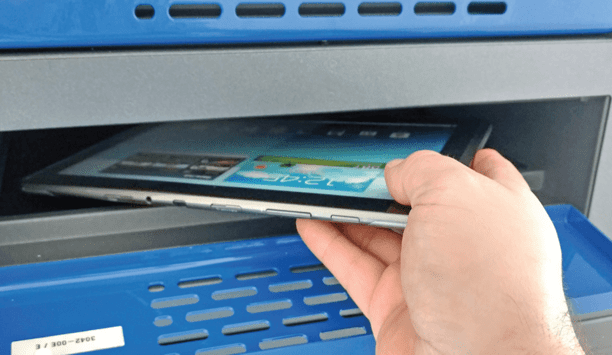
Best practices for asset management
Download
Understanding key control systems and best practices
Download
What are the security technology needs of the hotel sector?
Download
7 proven solutions for law enforcement key control and asset management
Download
Security practices for hotels
Download
Best practices for asset management
Download
Understanding key control systems and best practices
Download
What are the security technology needs of the hotel sector?
Download
7 proven solutions for law enforcement key control and asset management
Download
Security practices for hotels
Download
Best practices for asset management
Download

Videos
Key management: Manufacturers & Suppliers

Using artificial intelligence (AI) to automate physical security systems
Download
A modern guide to data loss prevention
Download
7 proven solutions for law enforcement key control and asset management
Download
The truth behind 9 mobile access myths
Download
Access control system planning phase 2
Download

